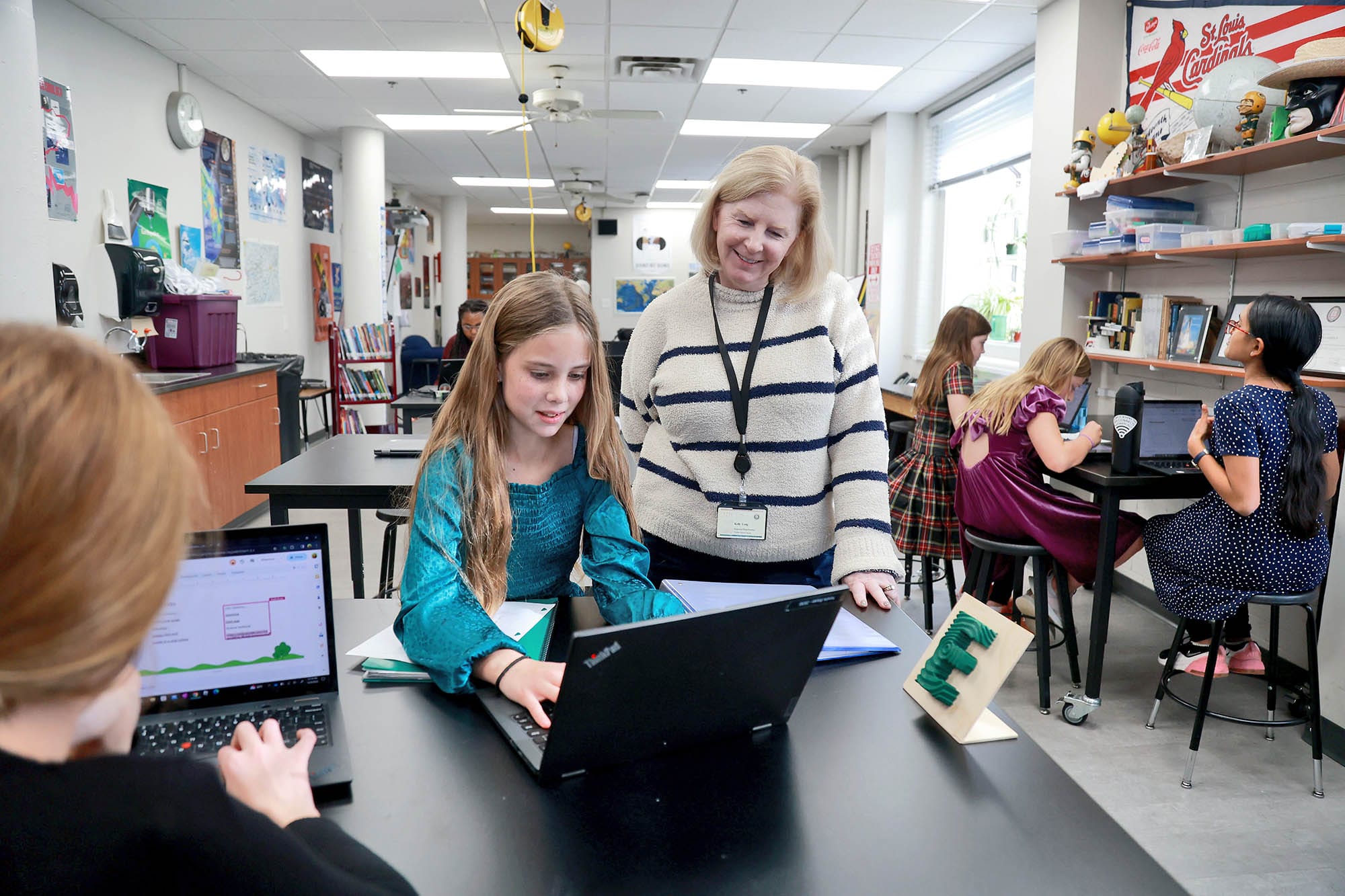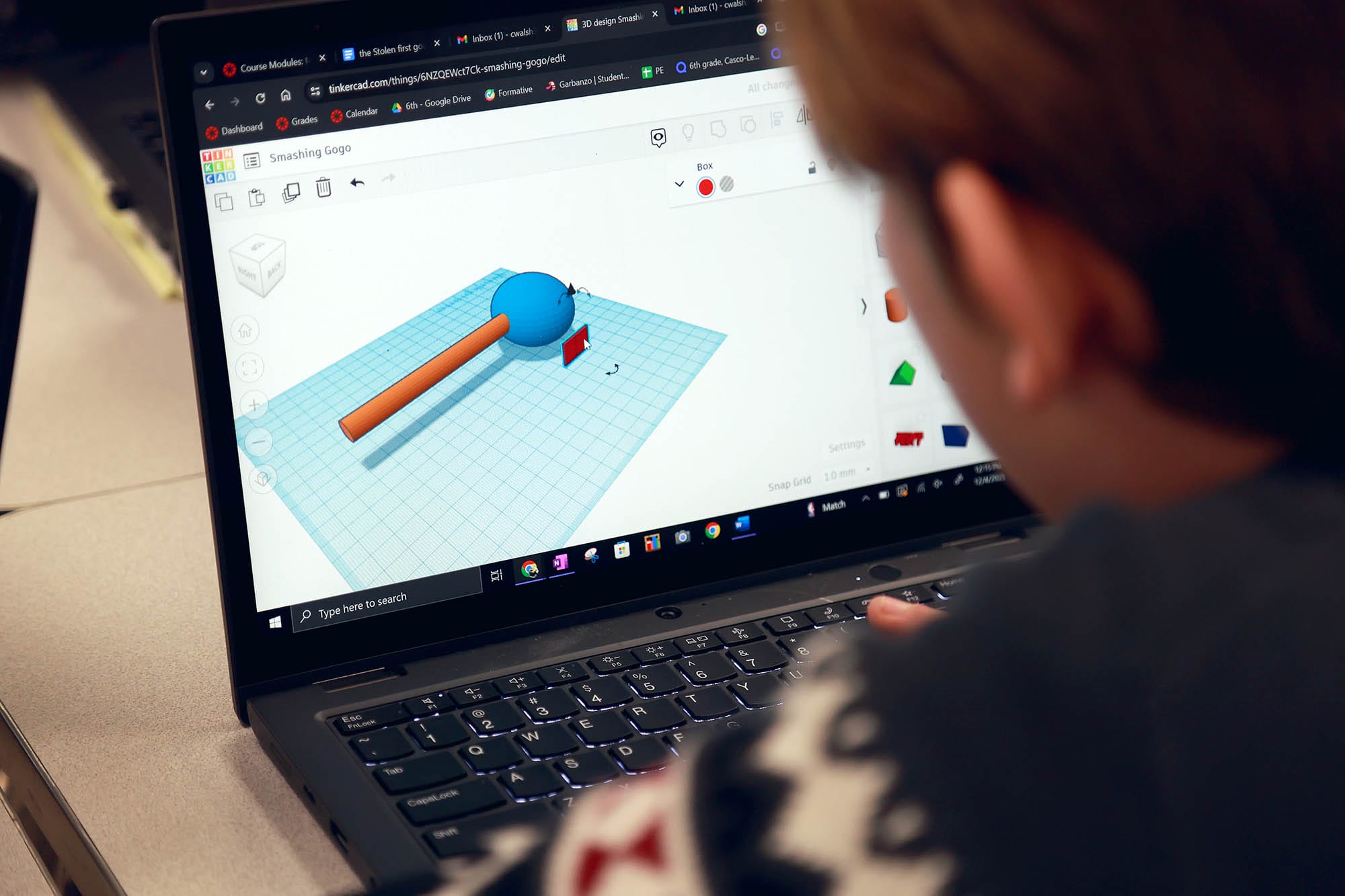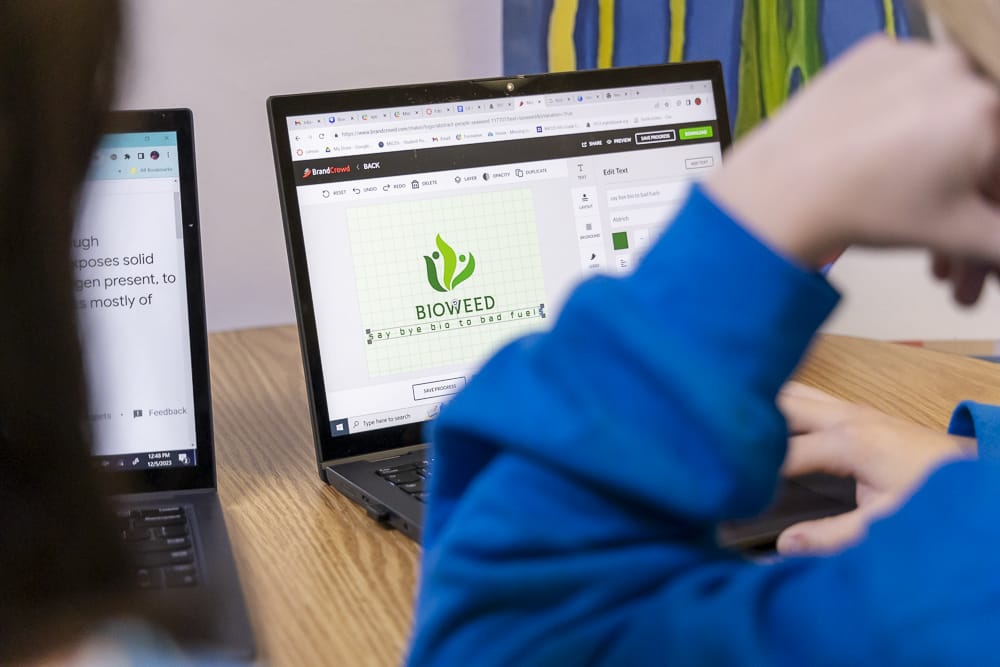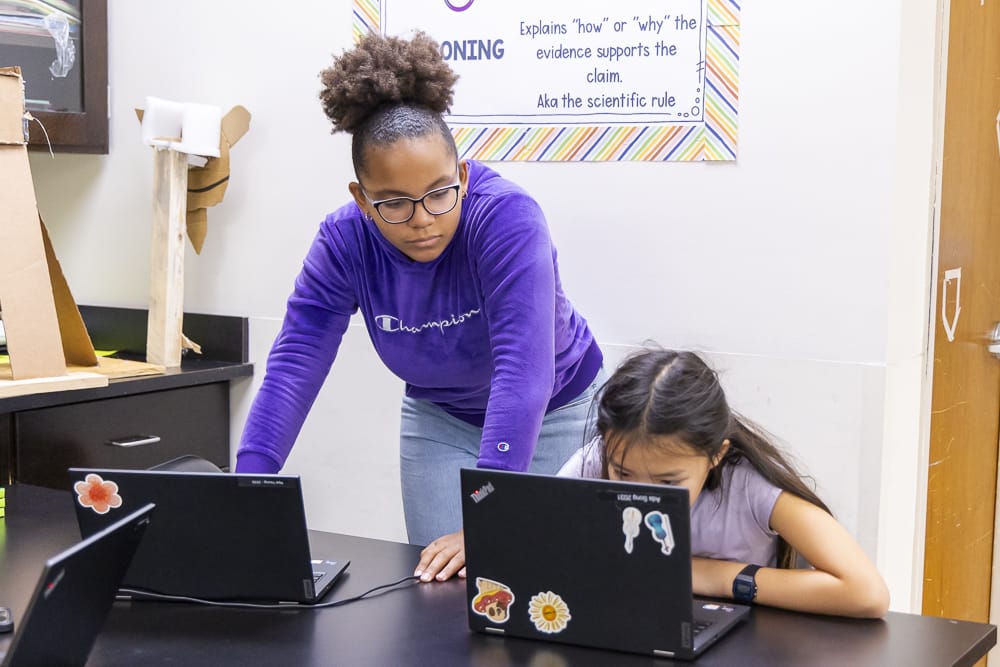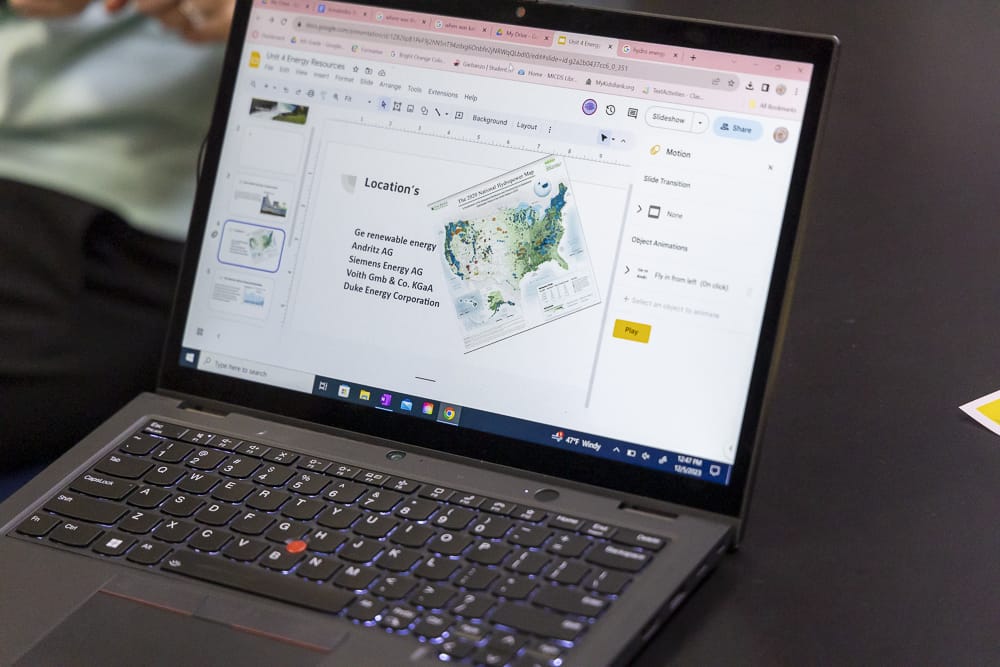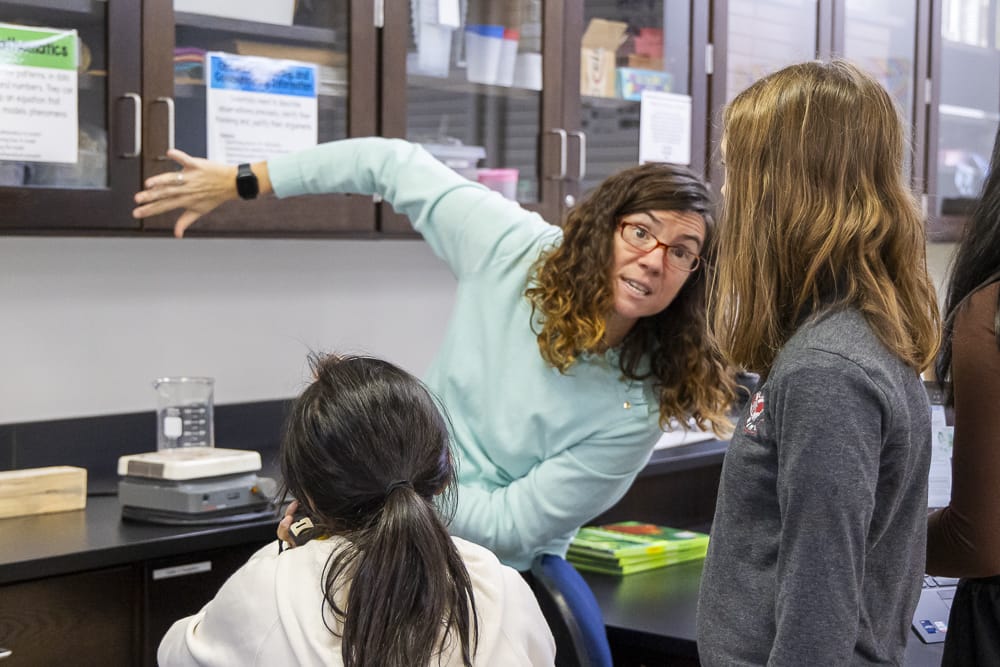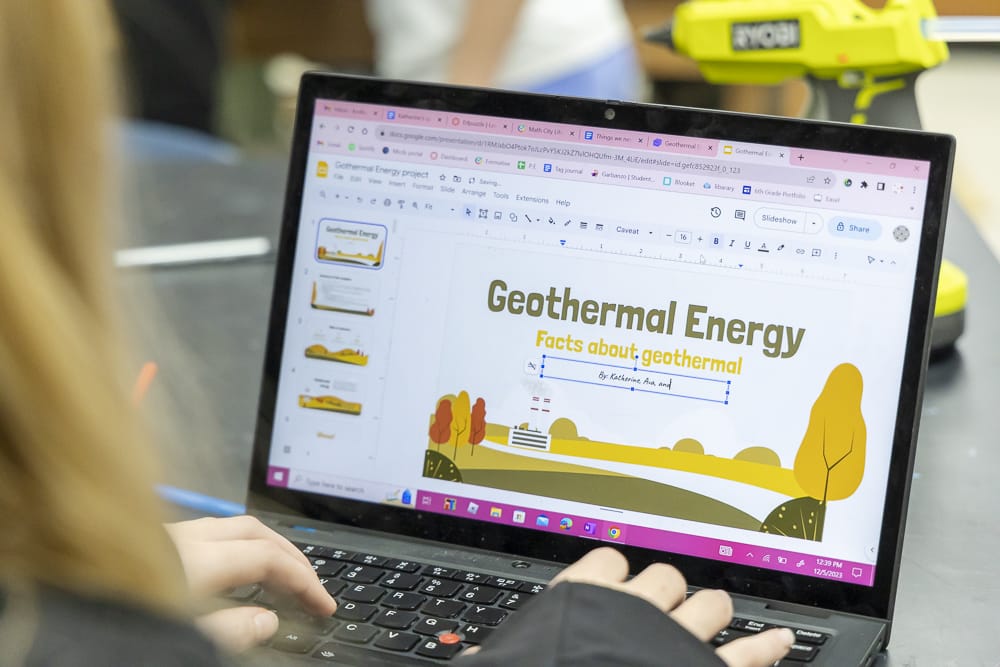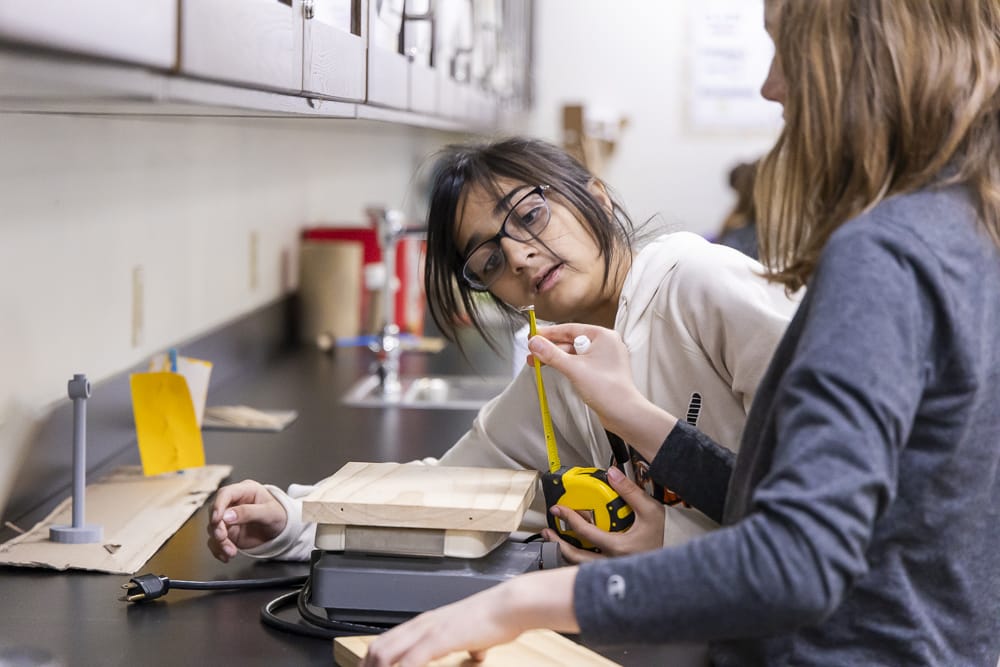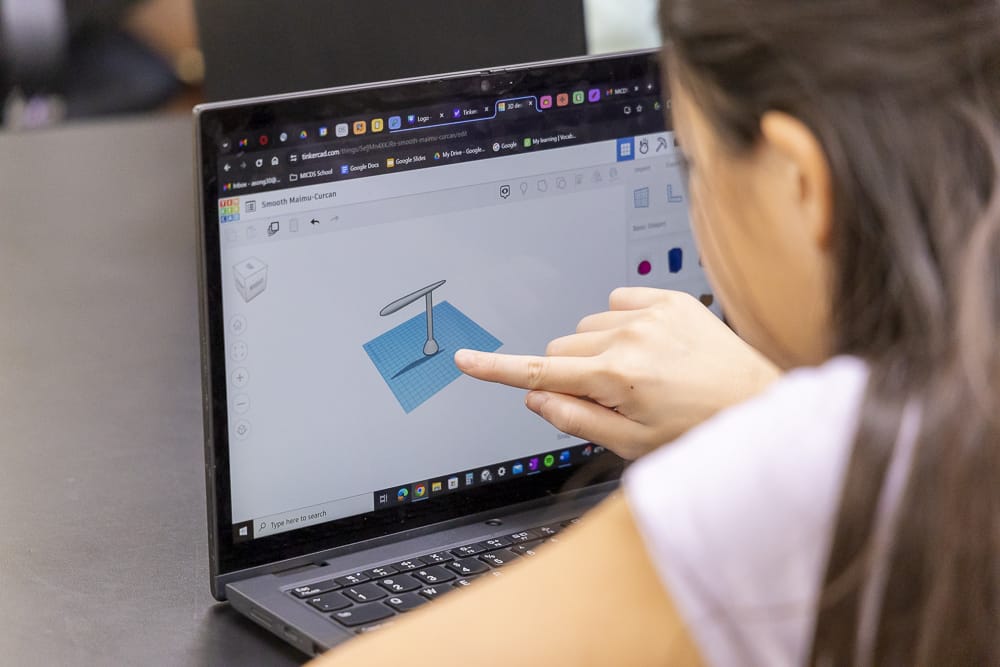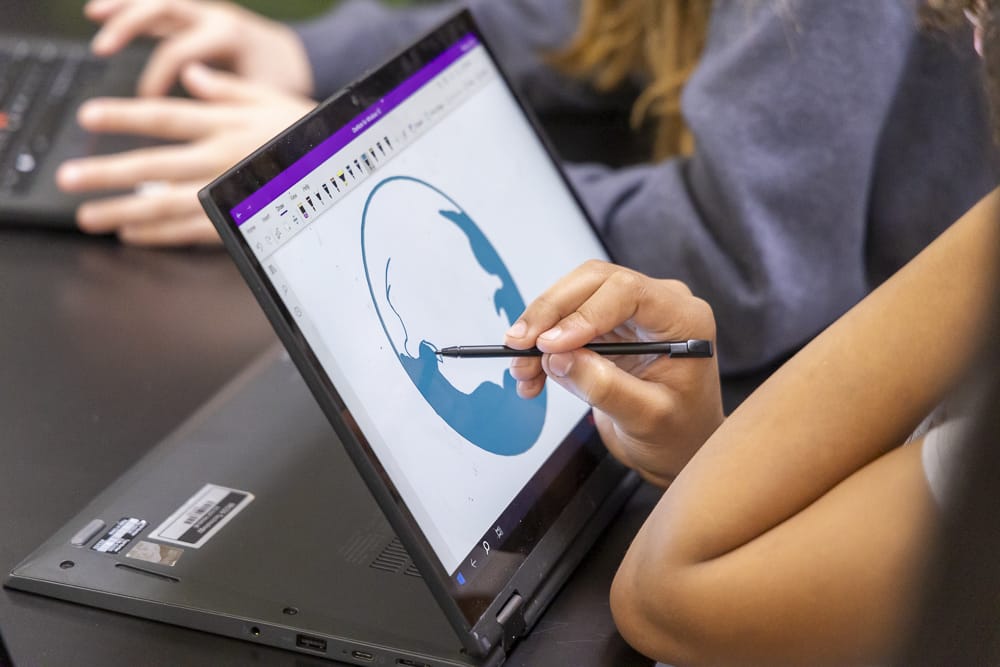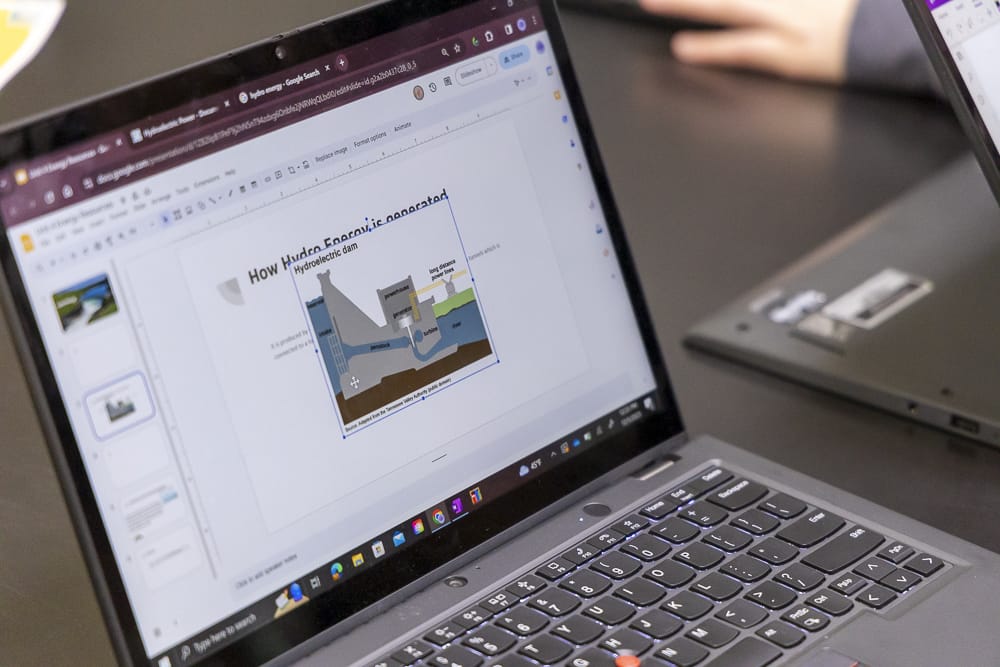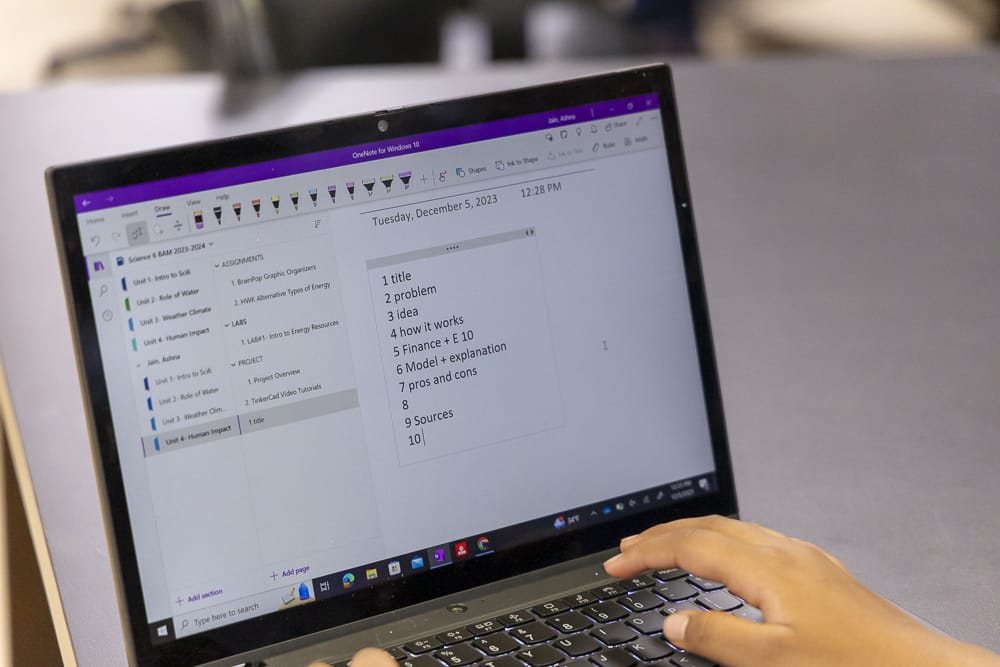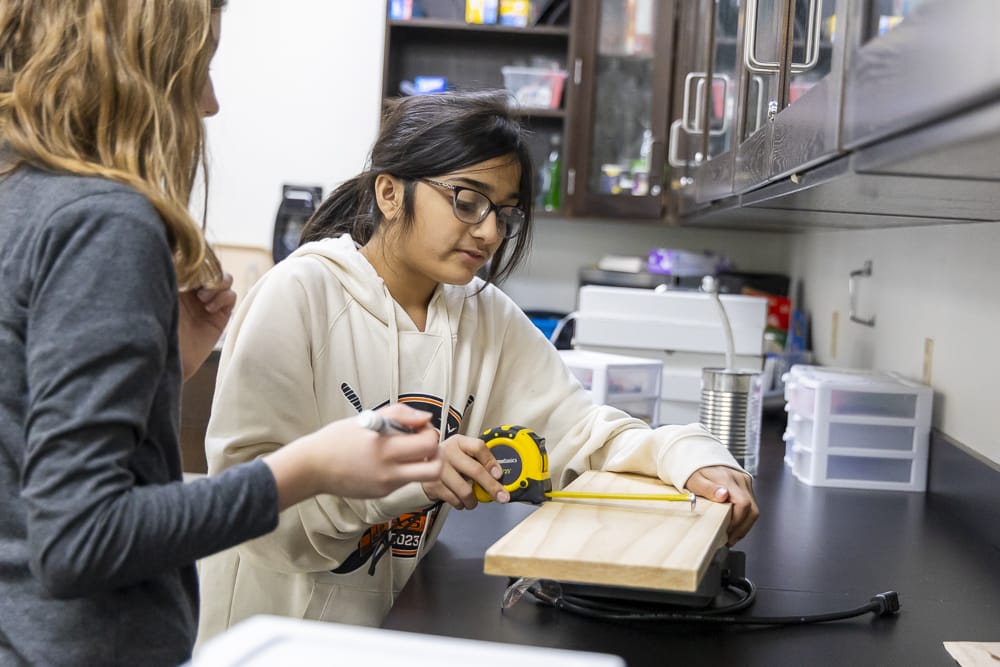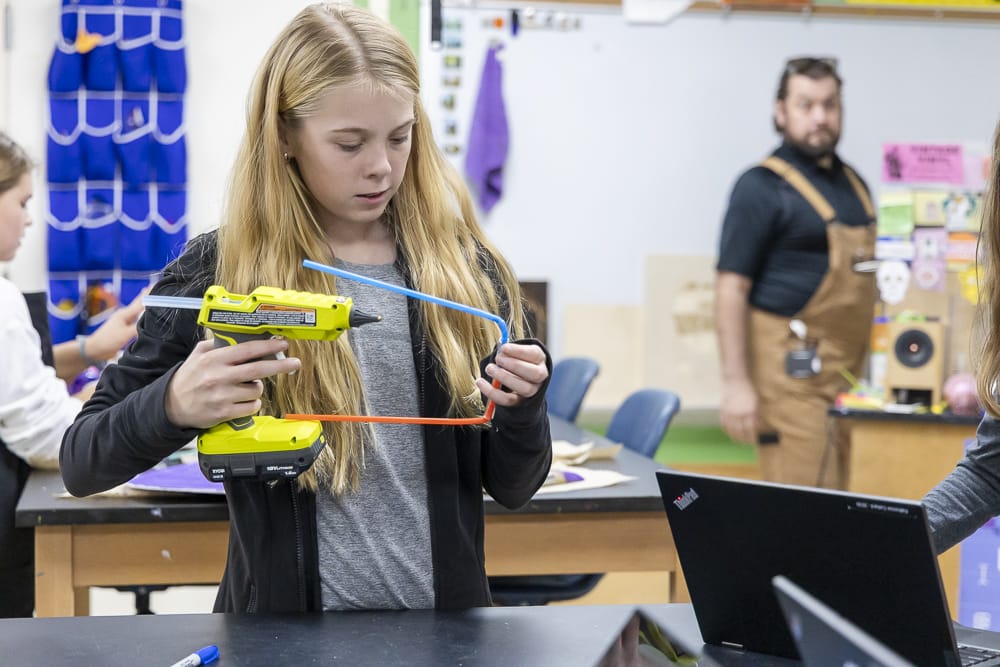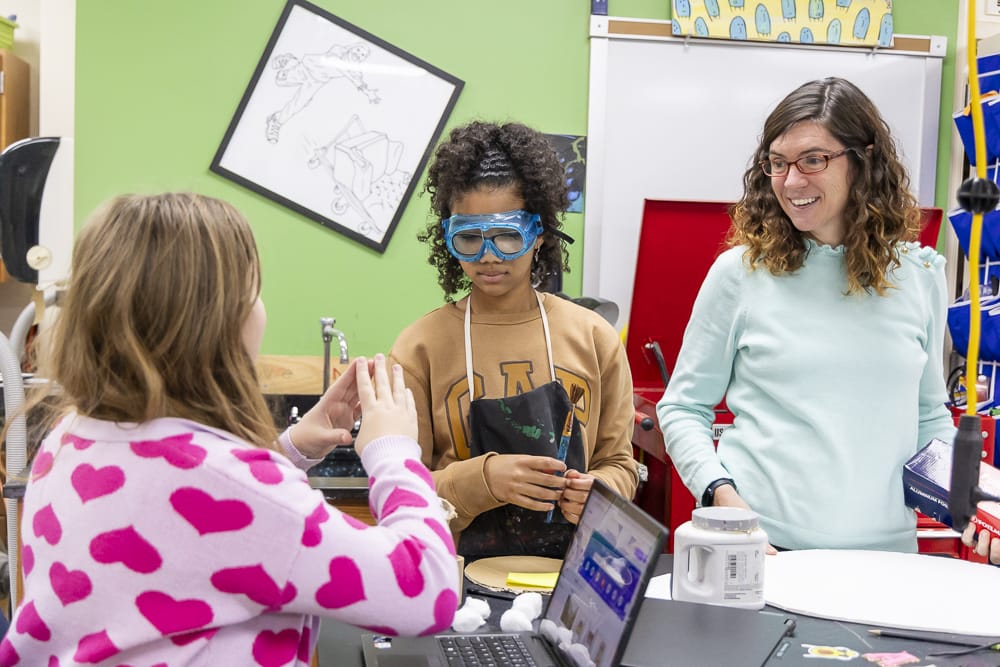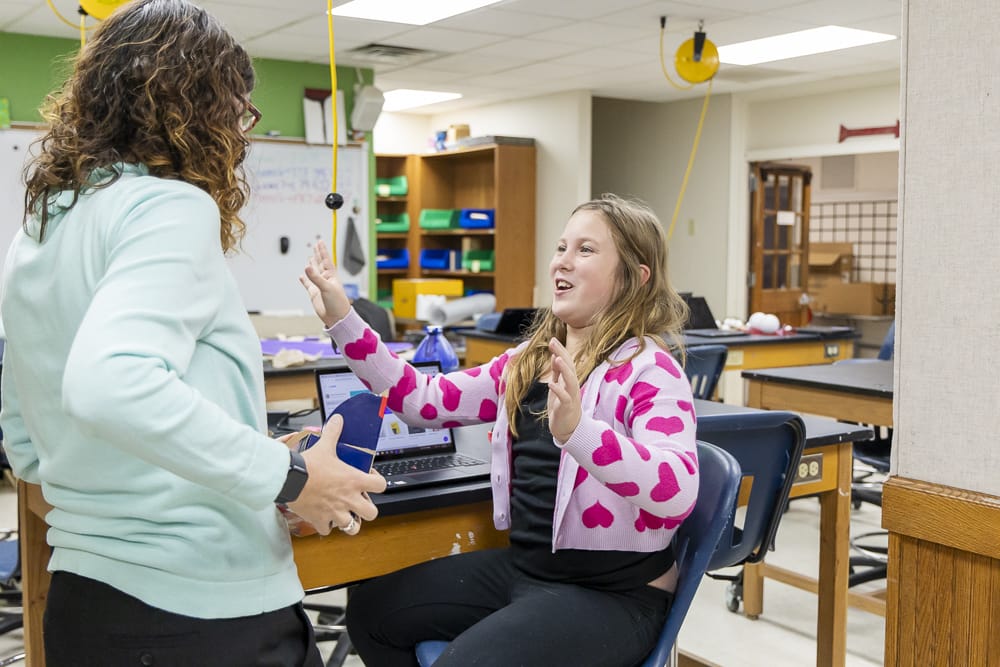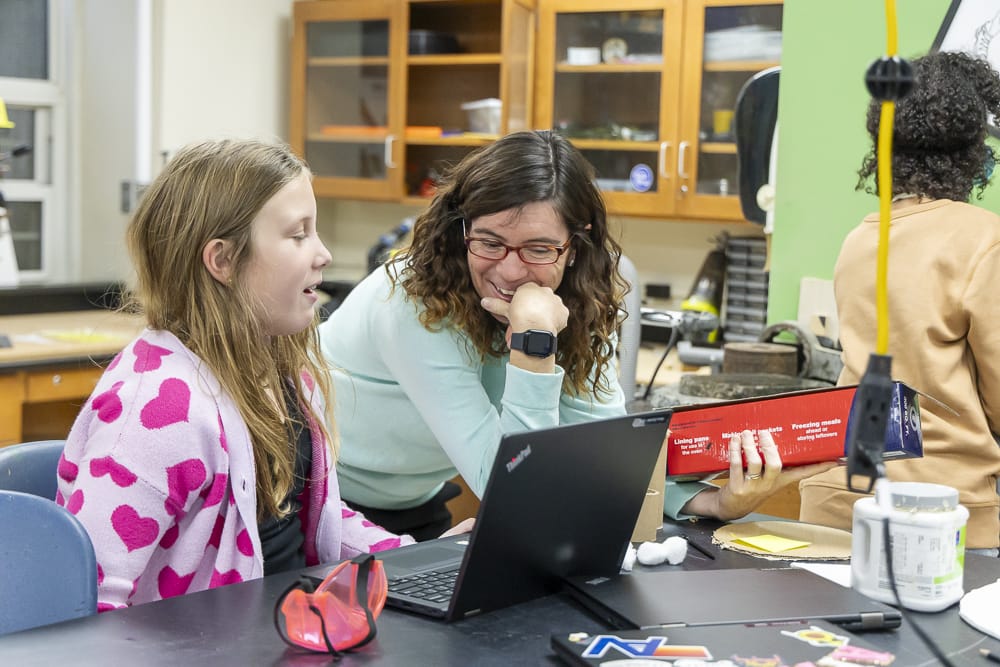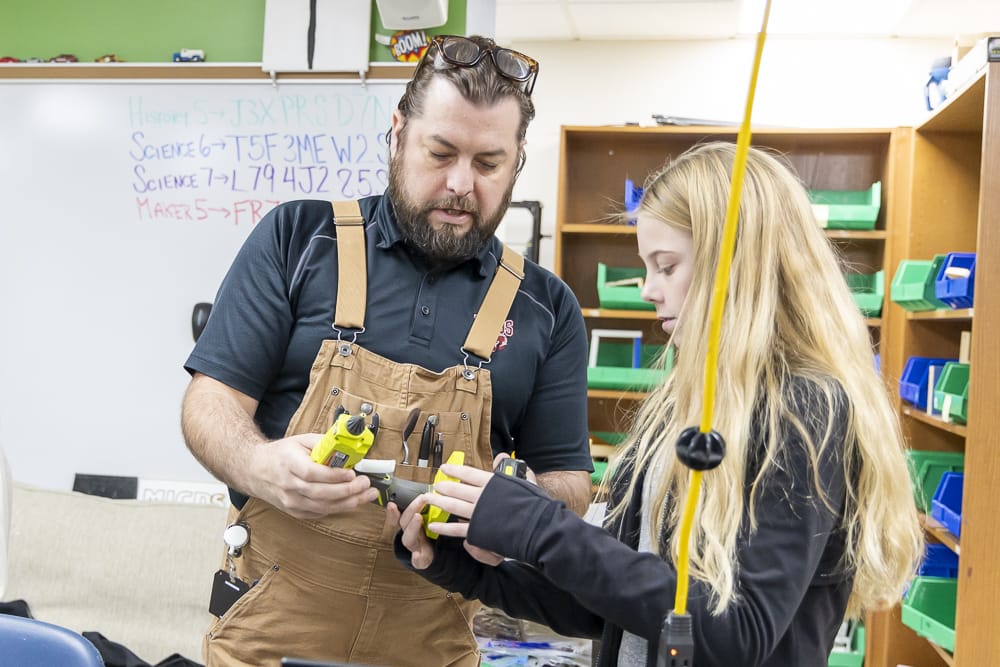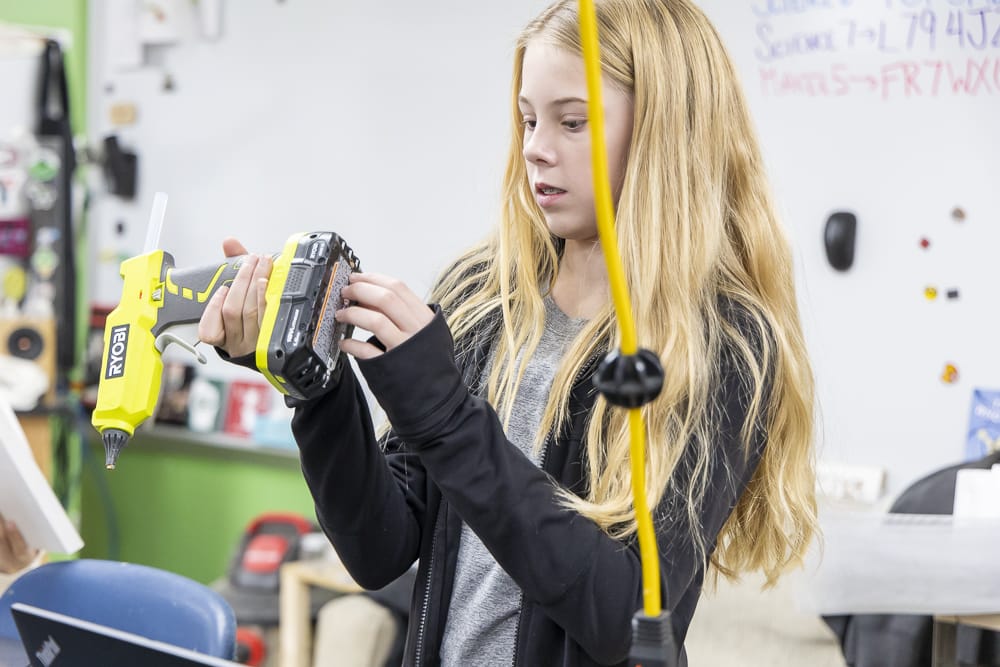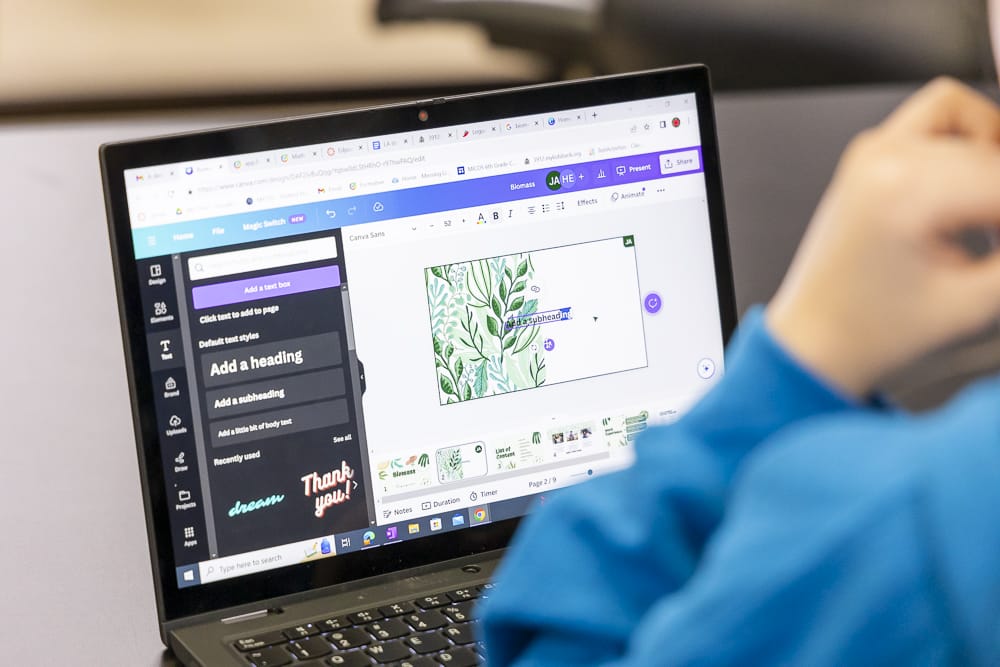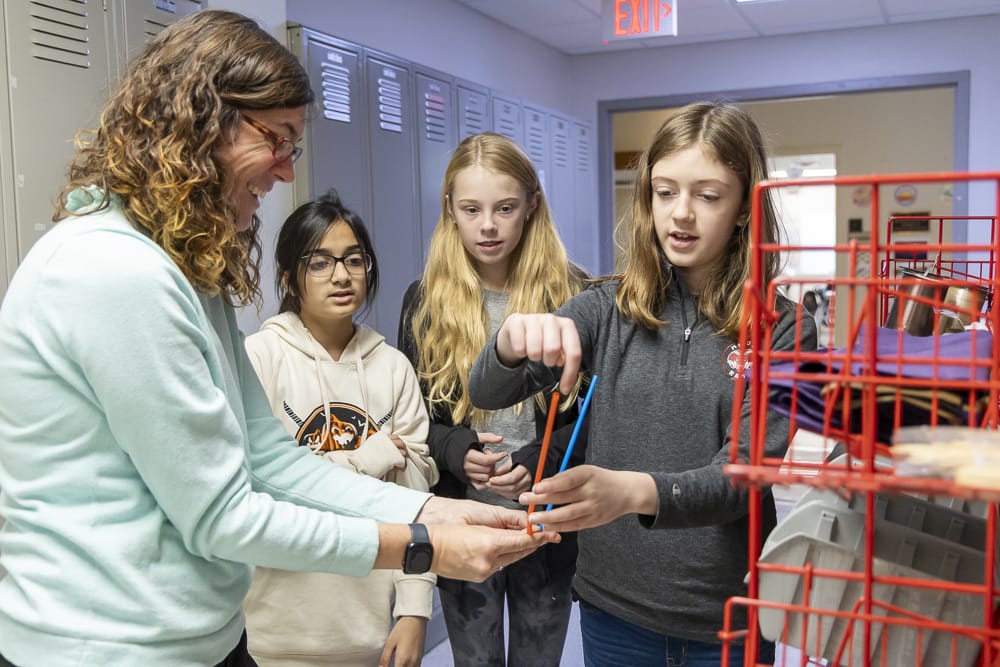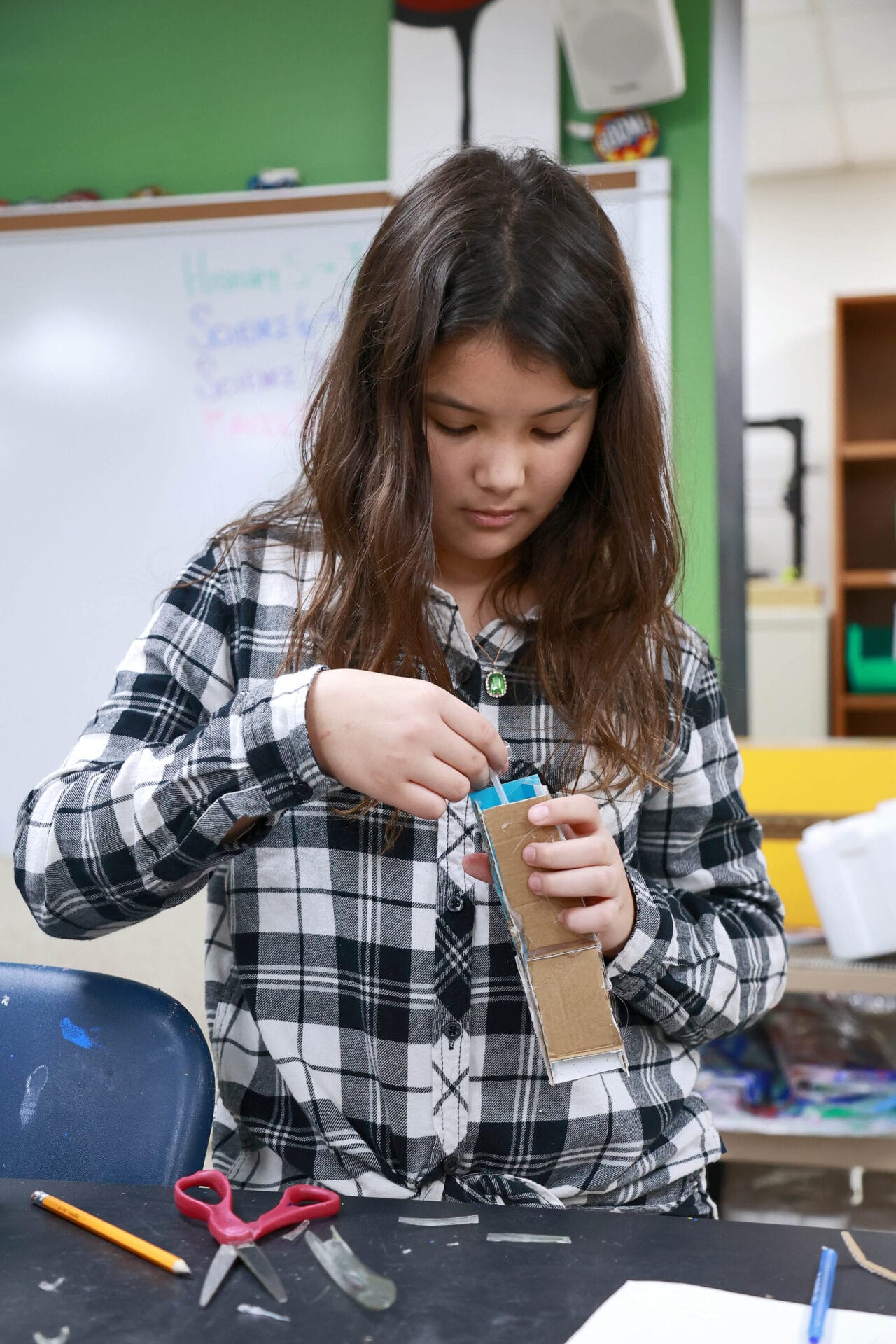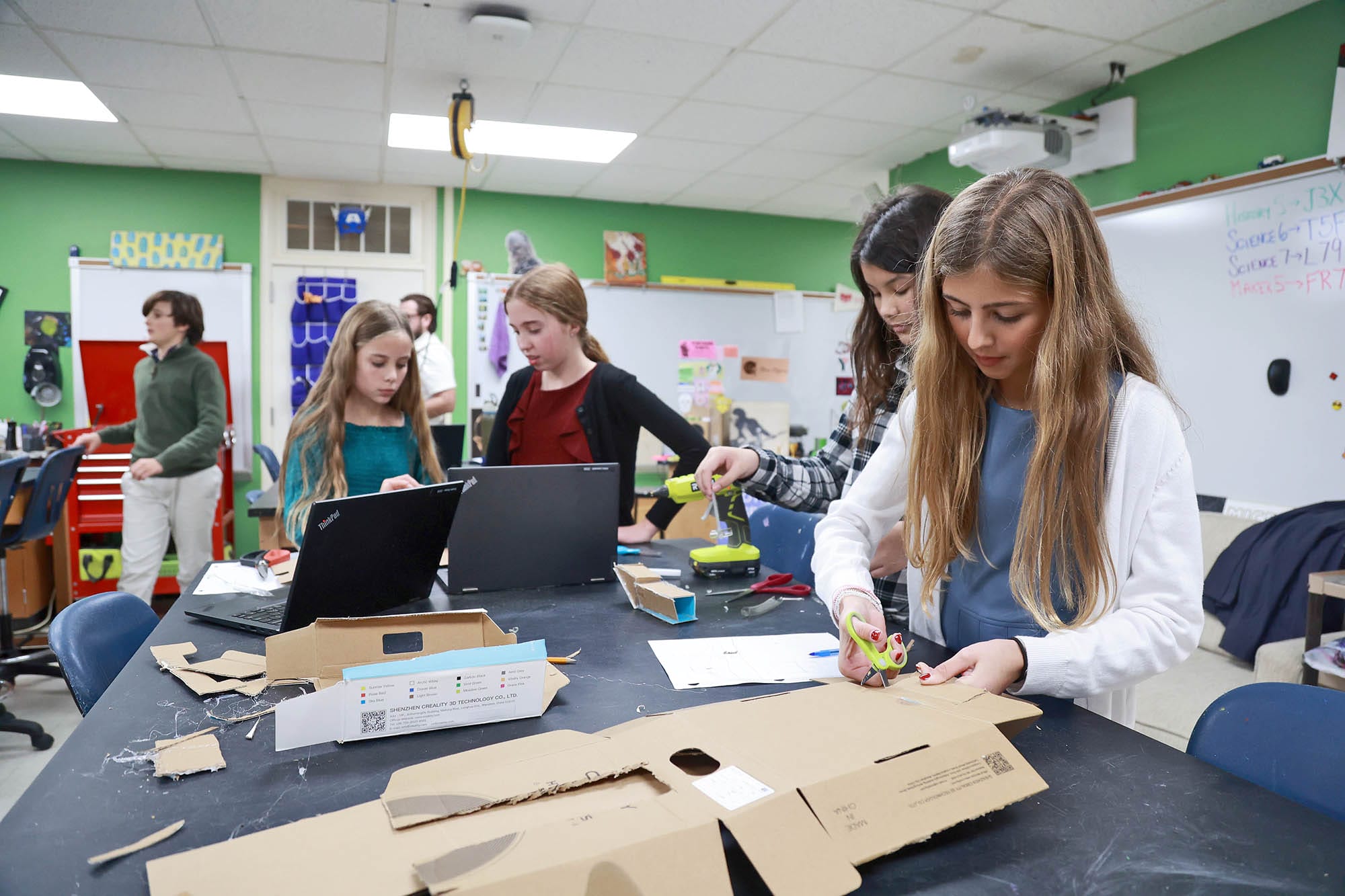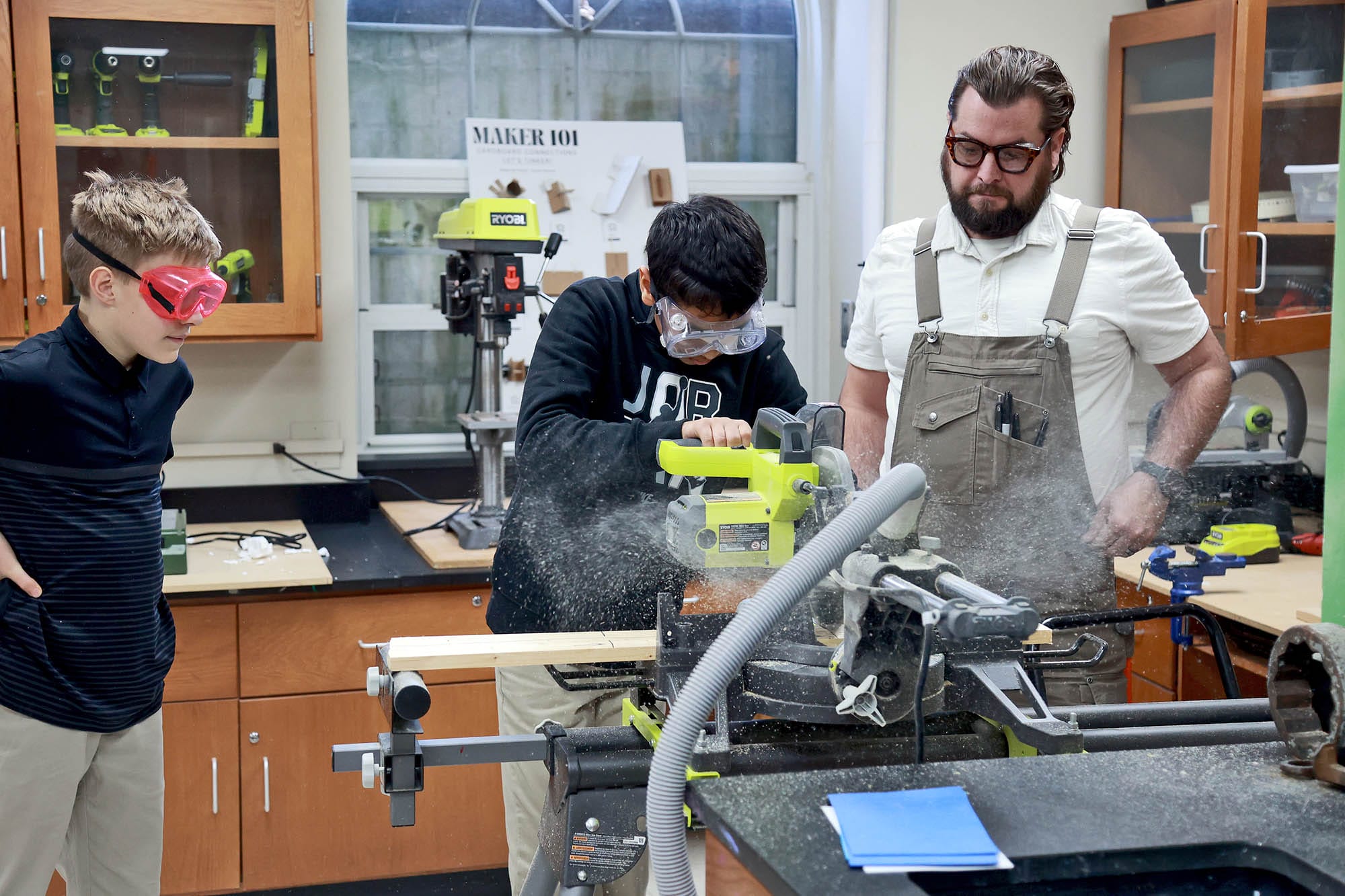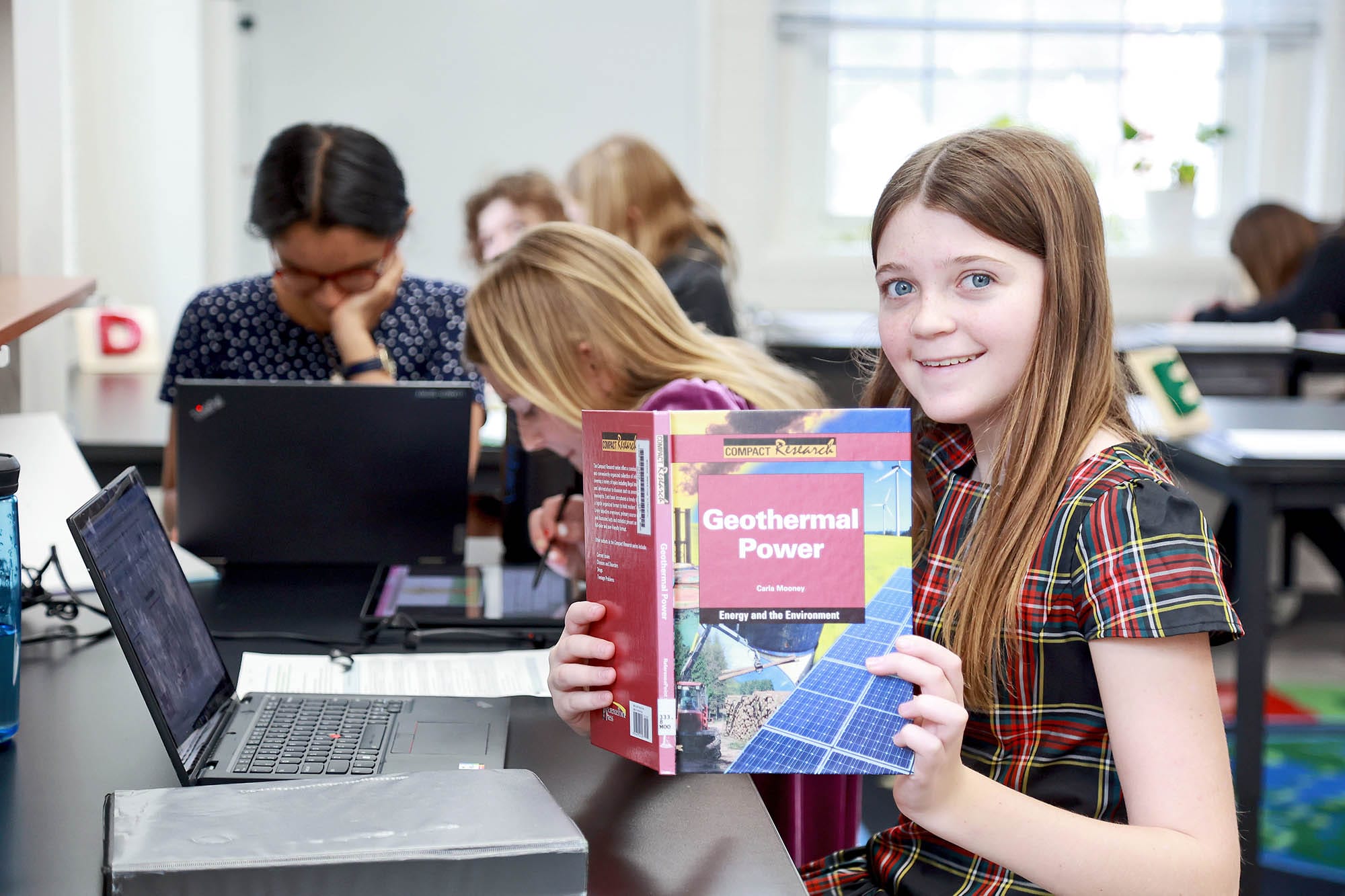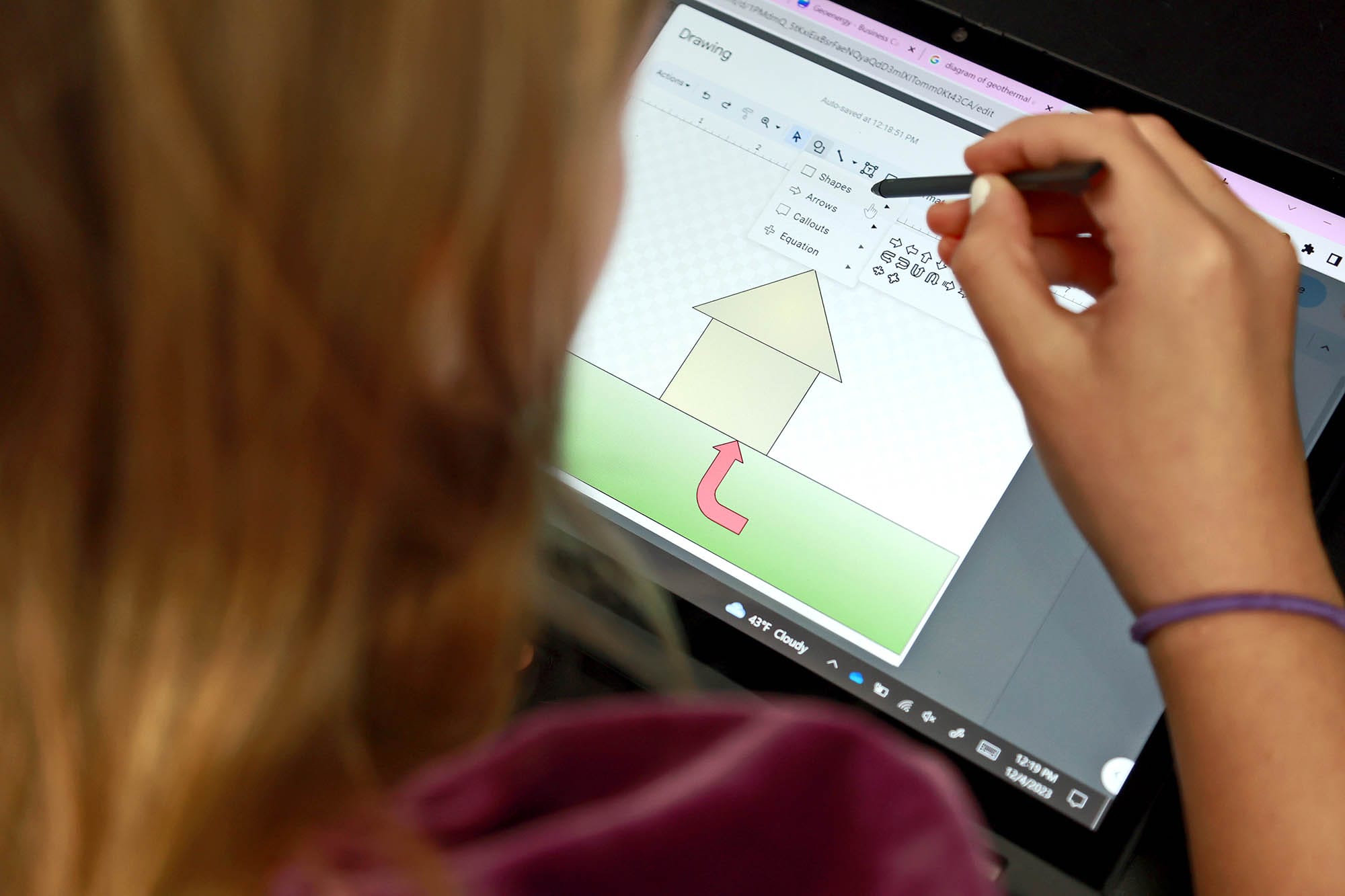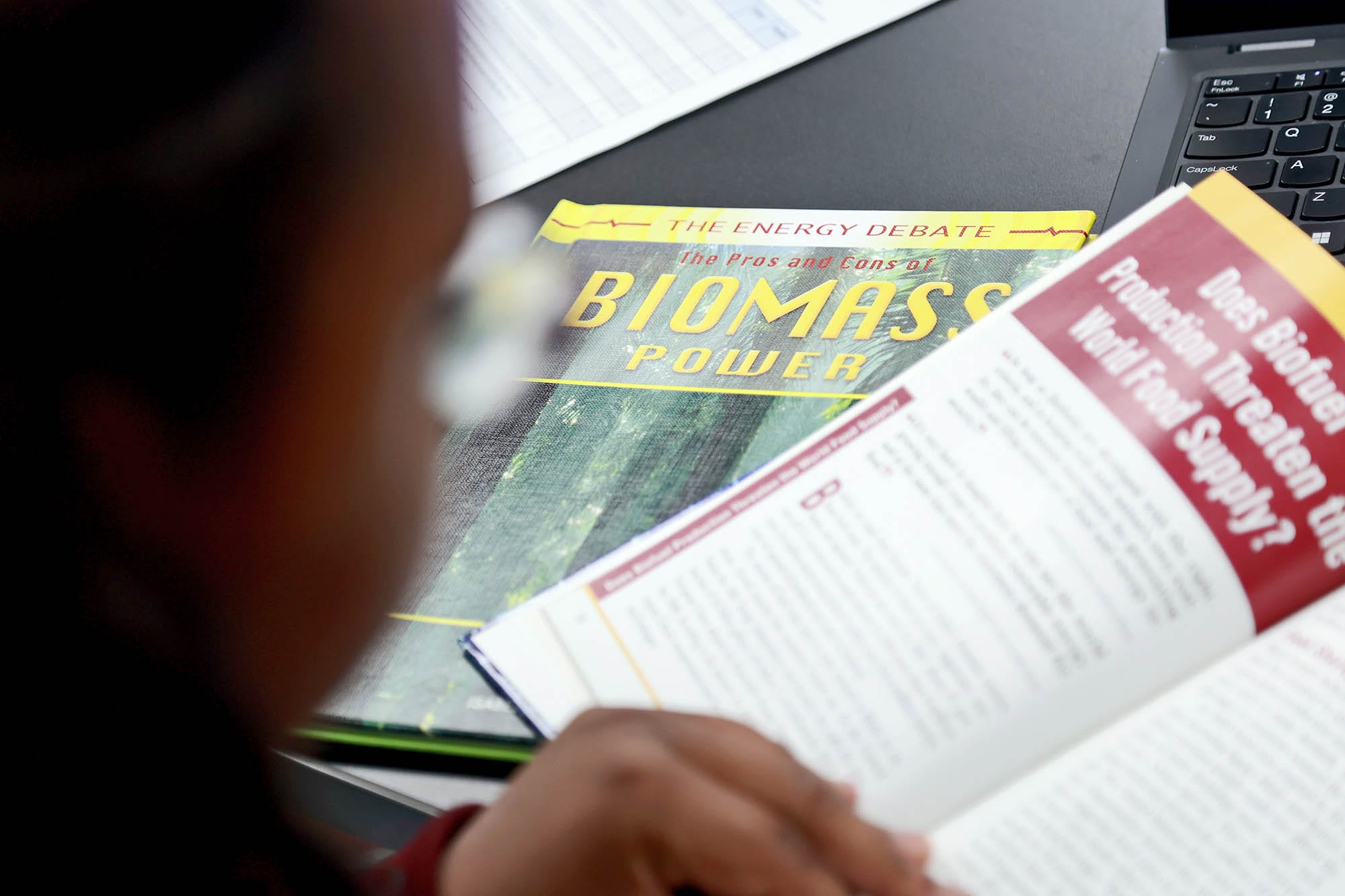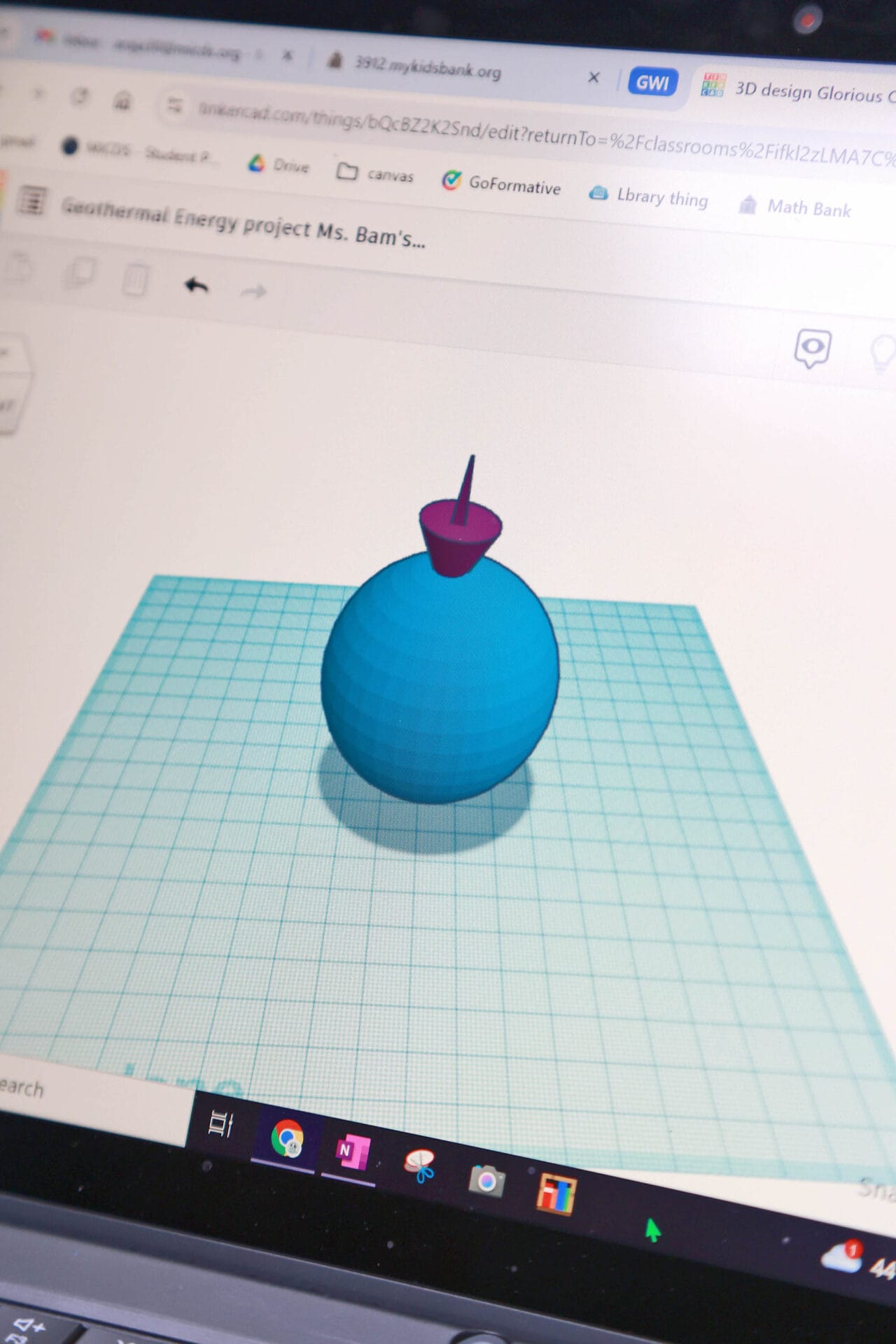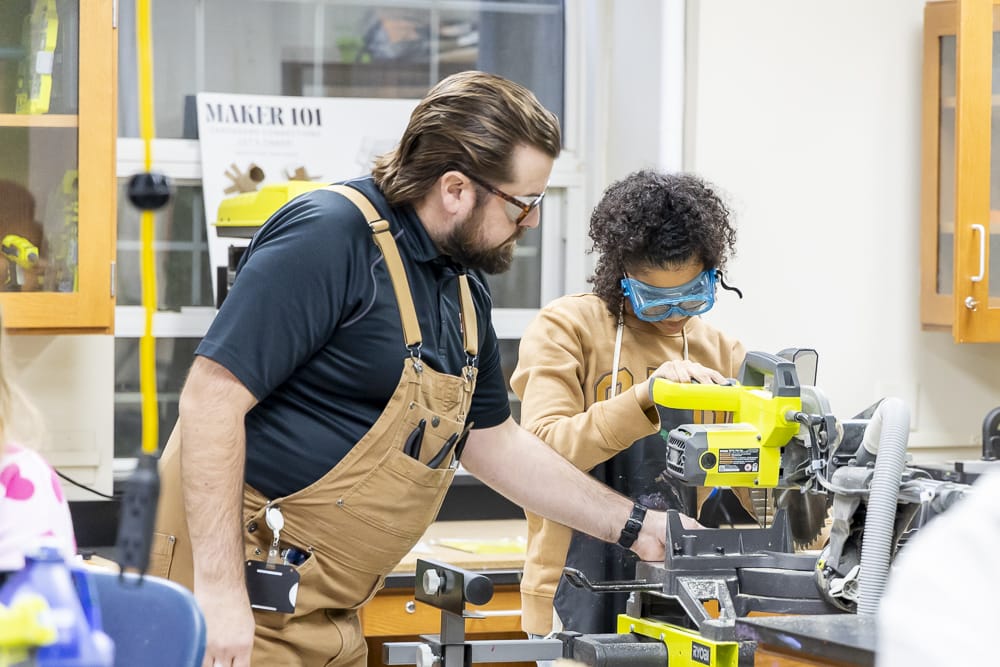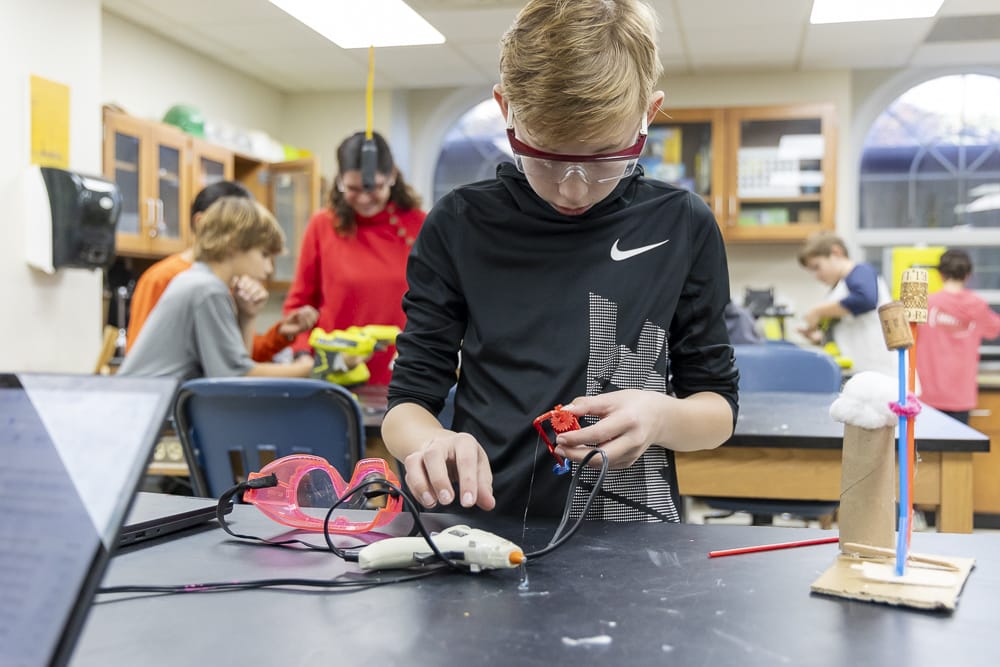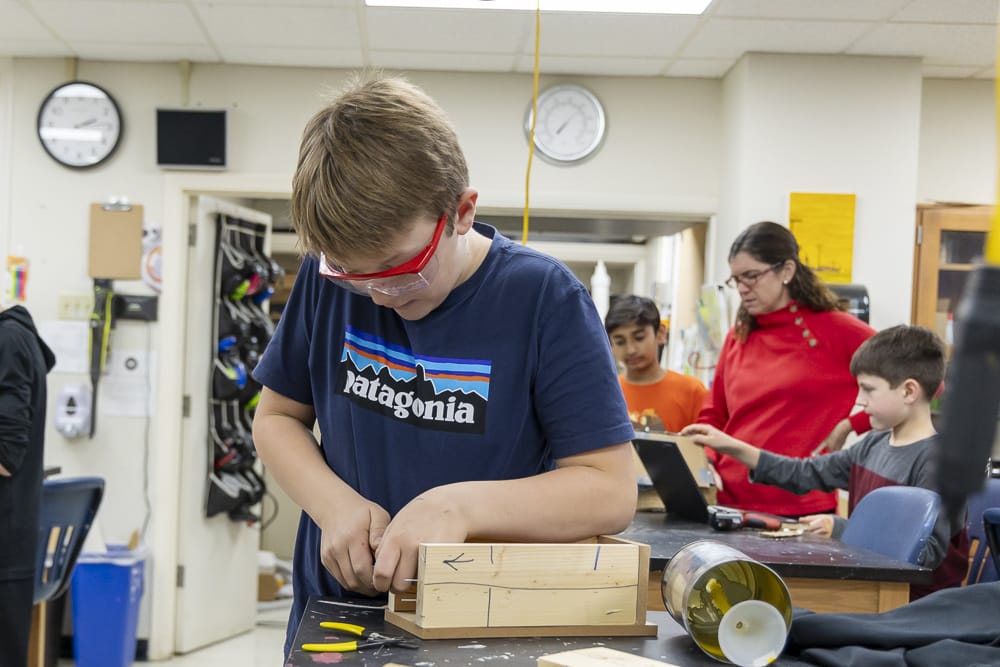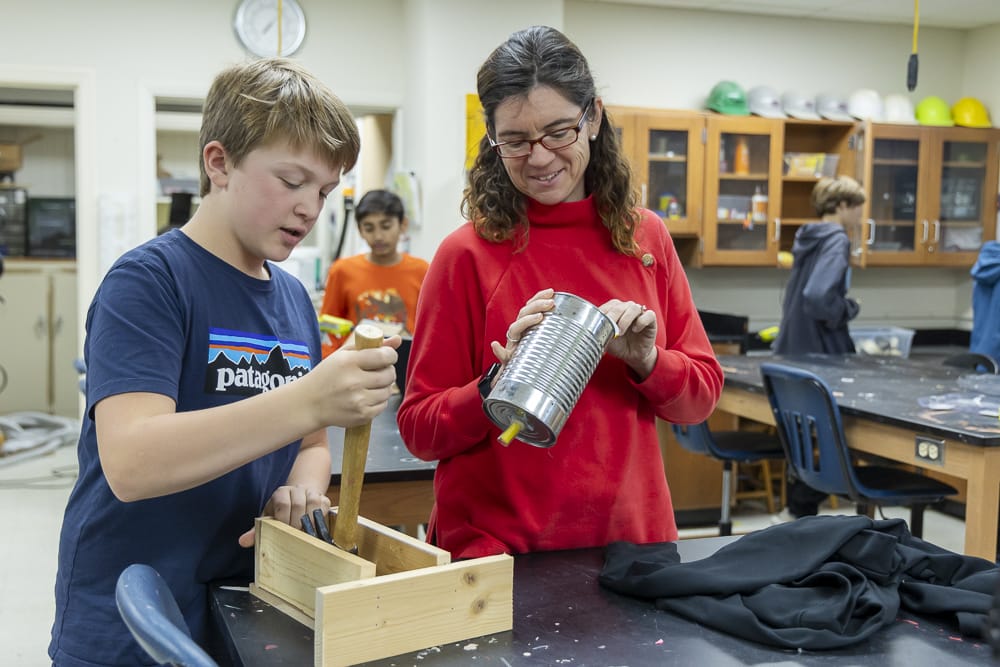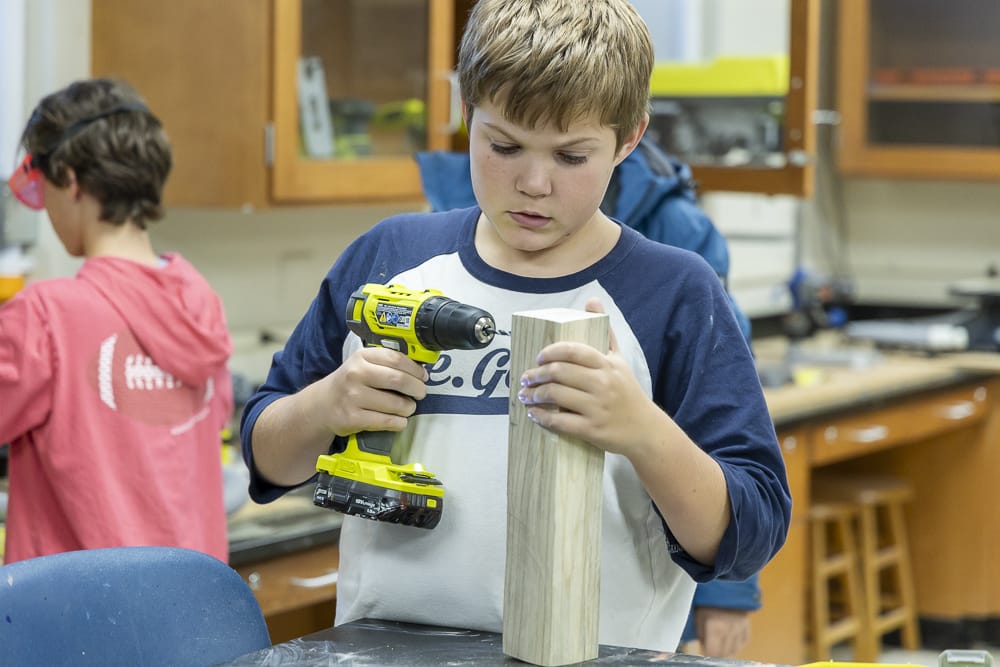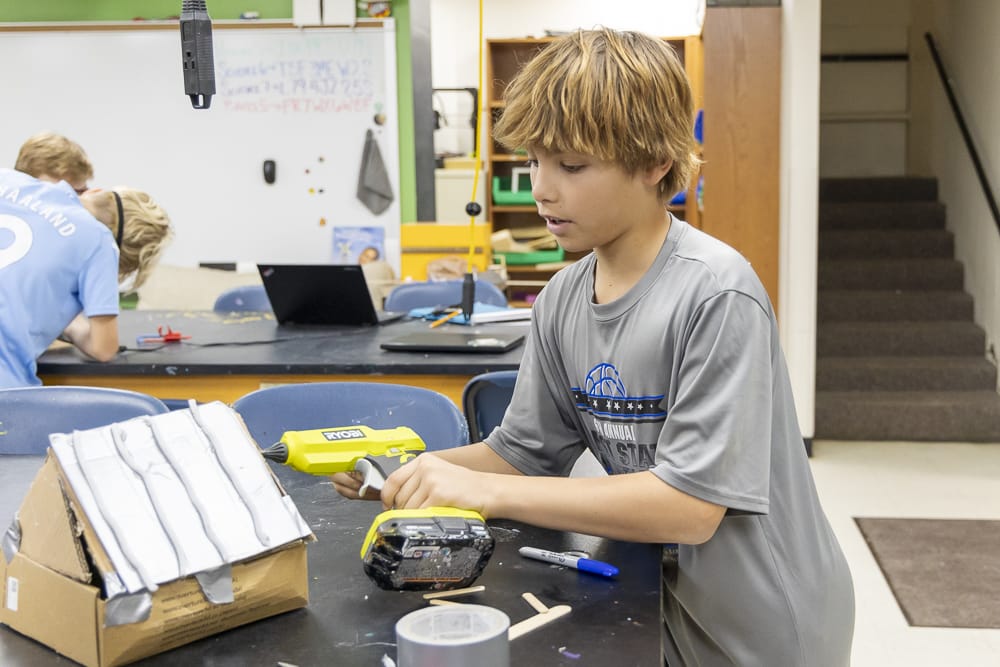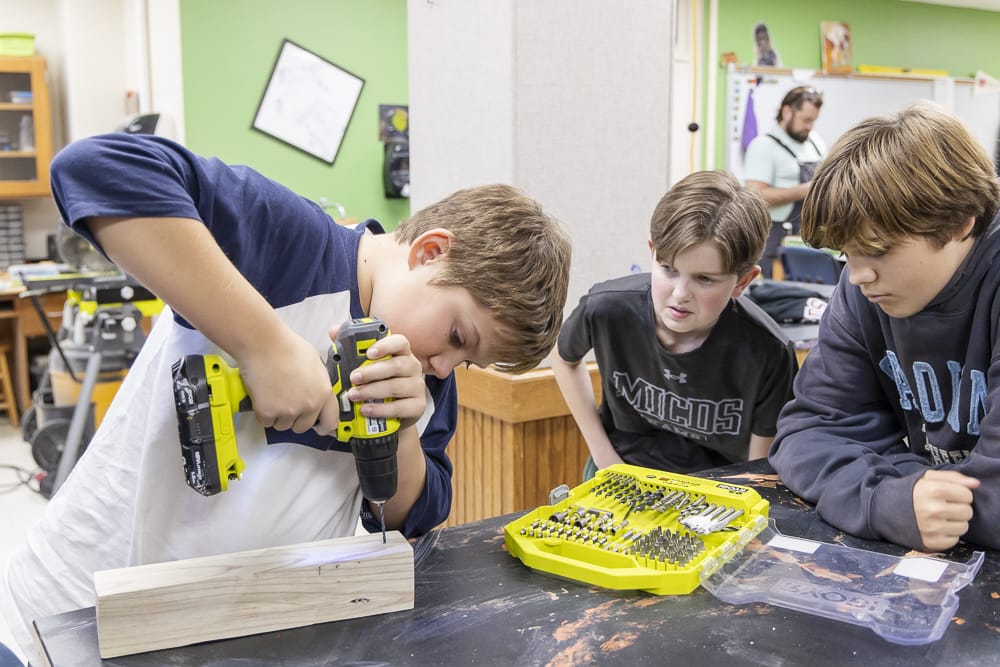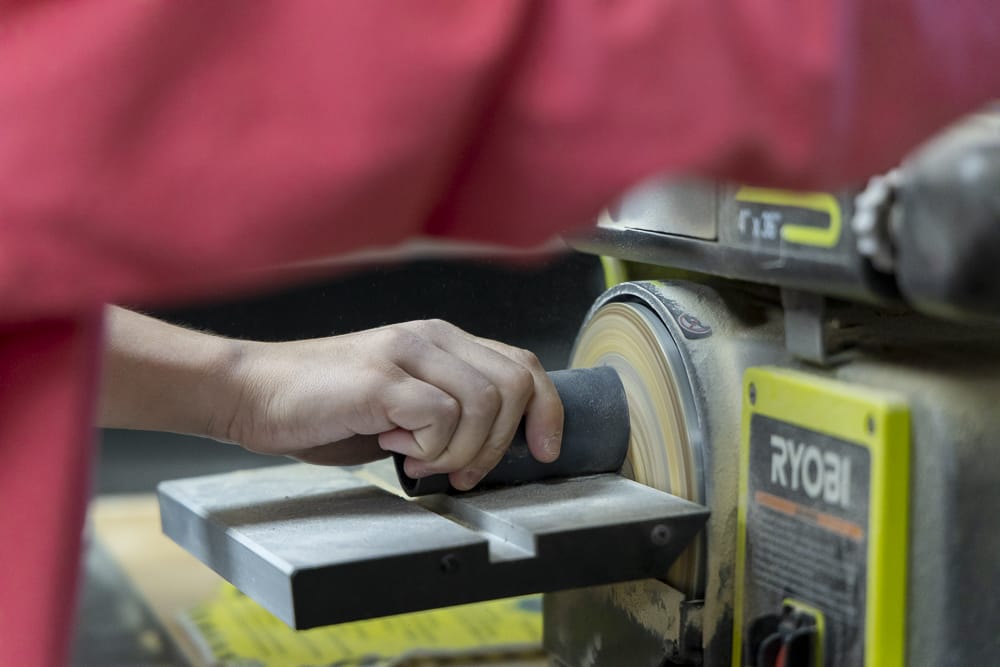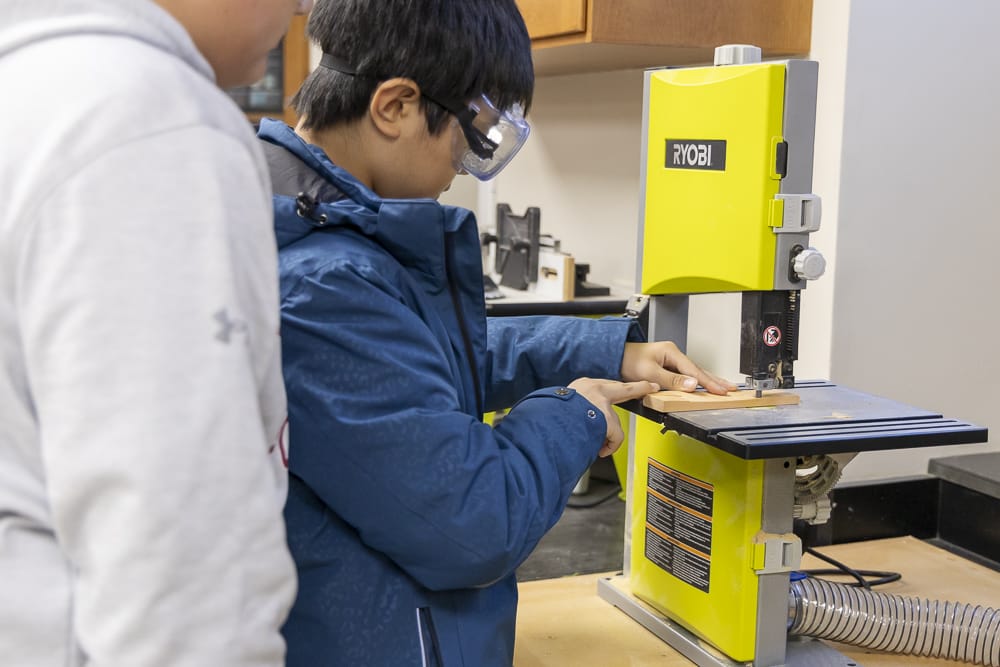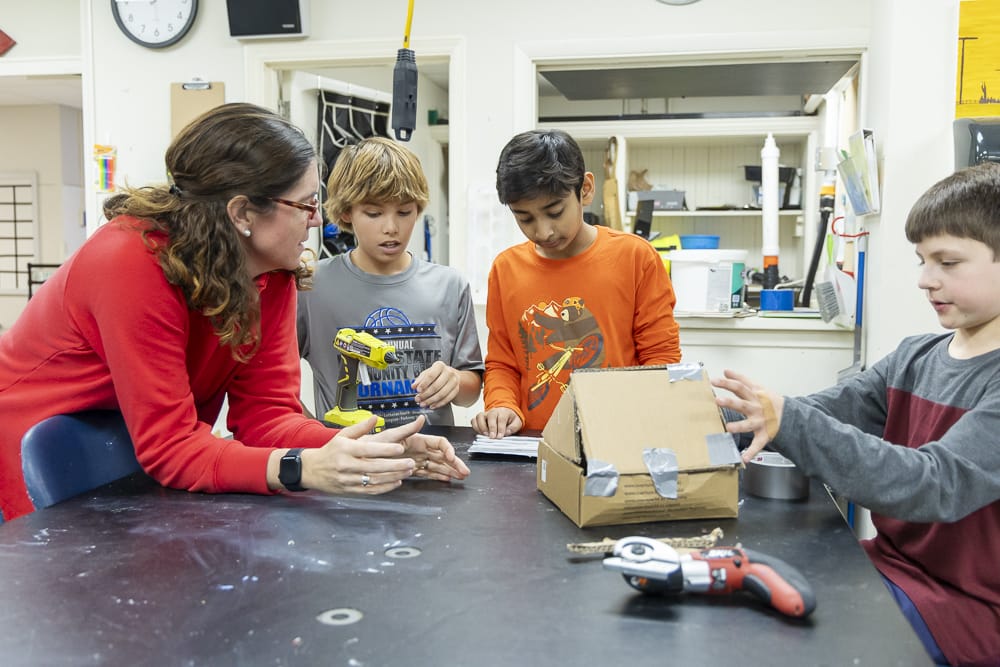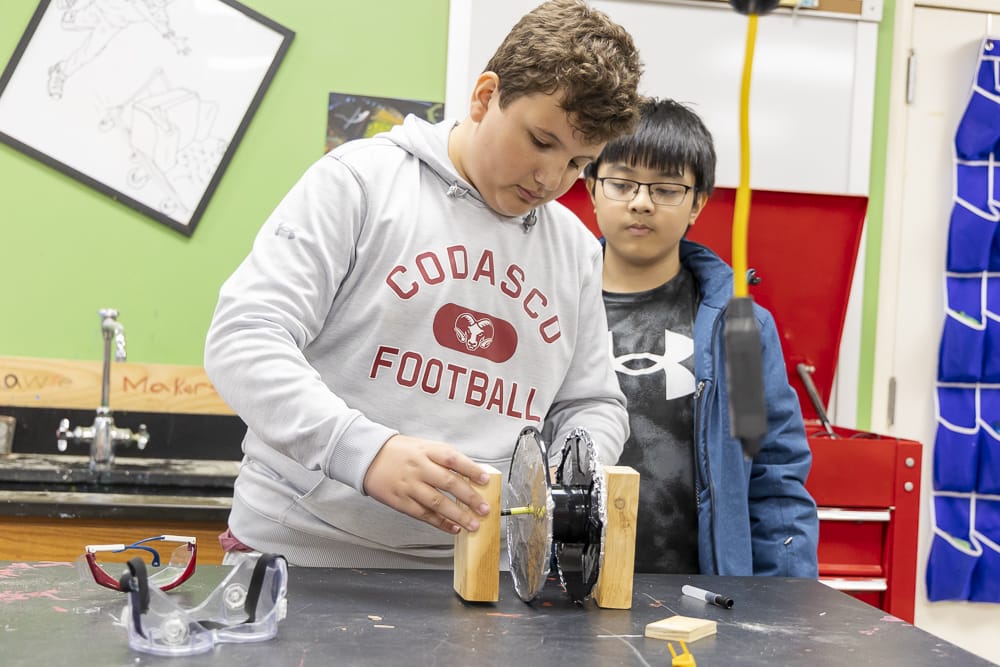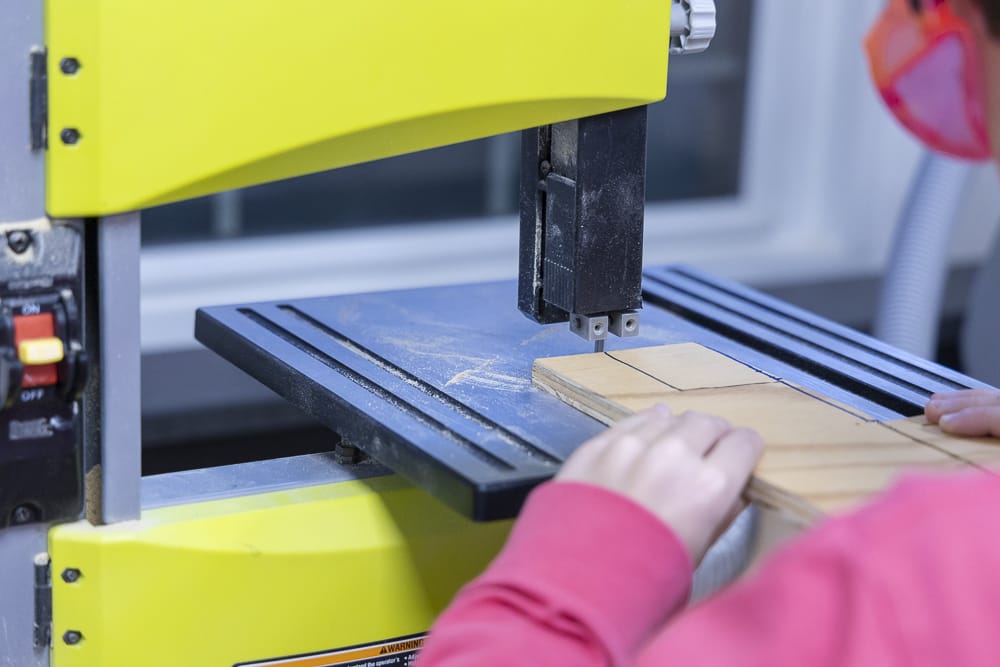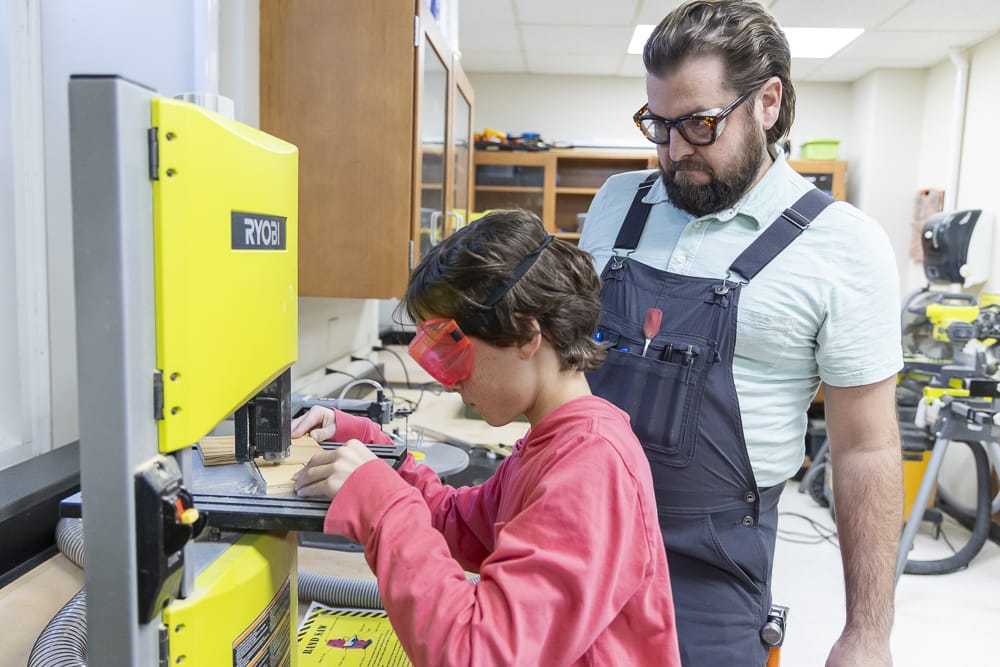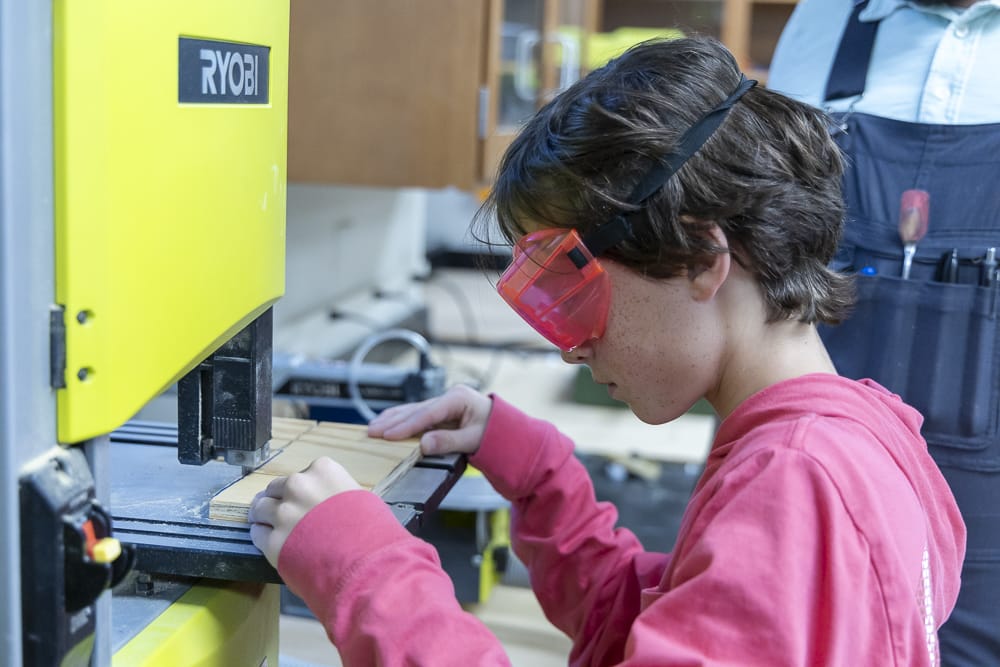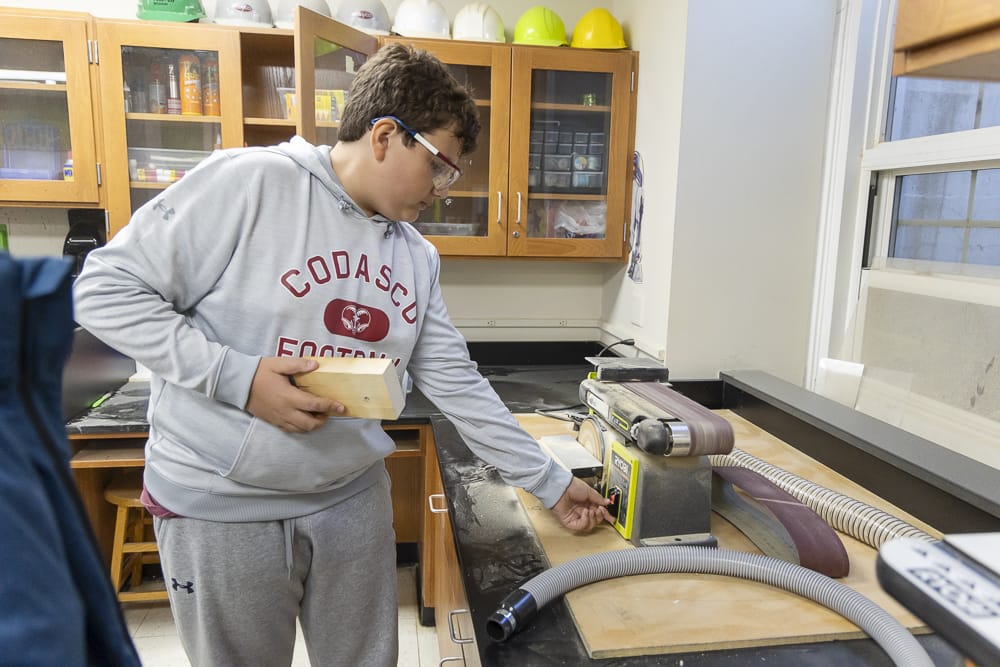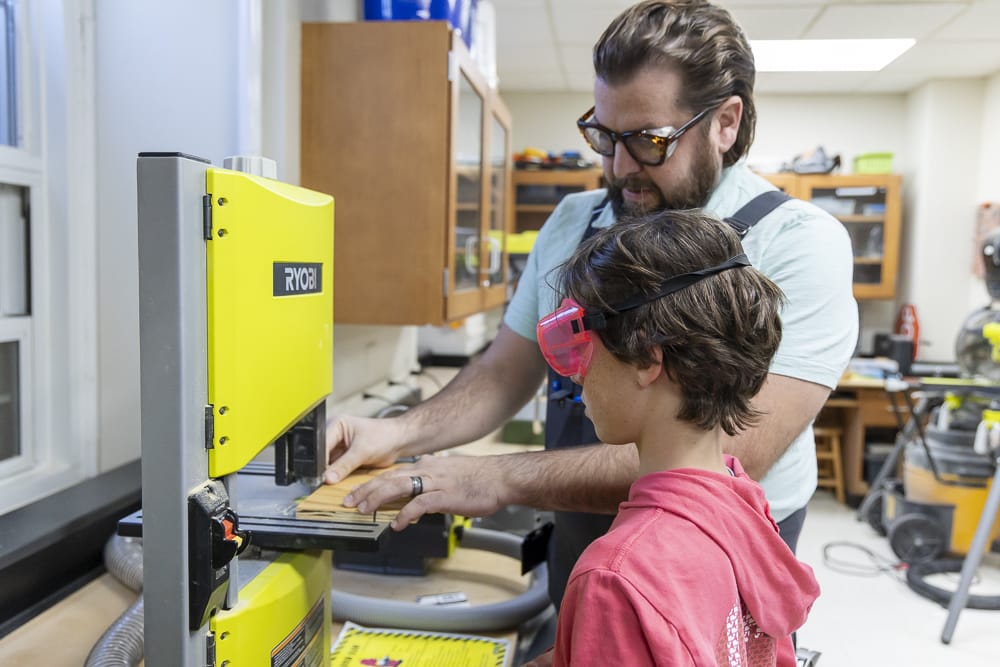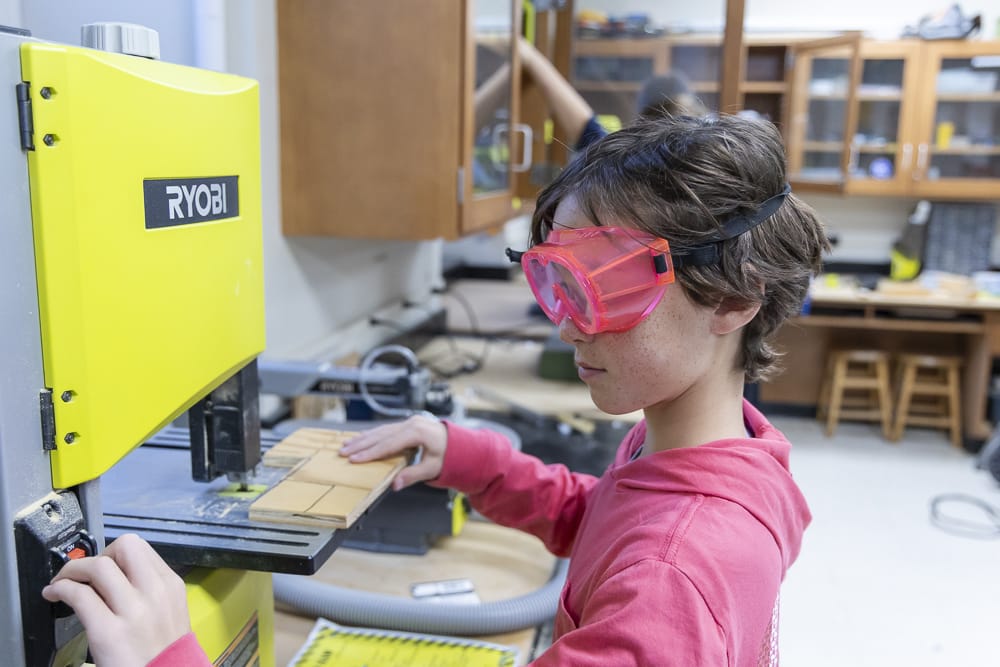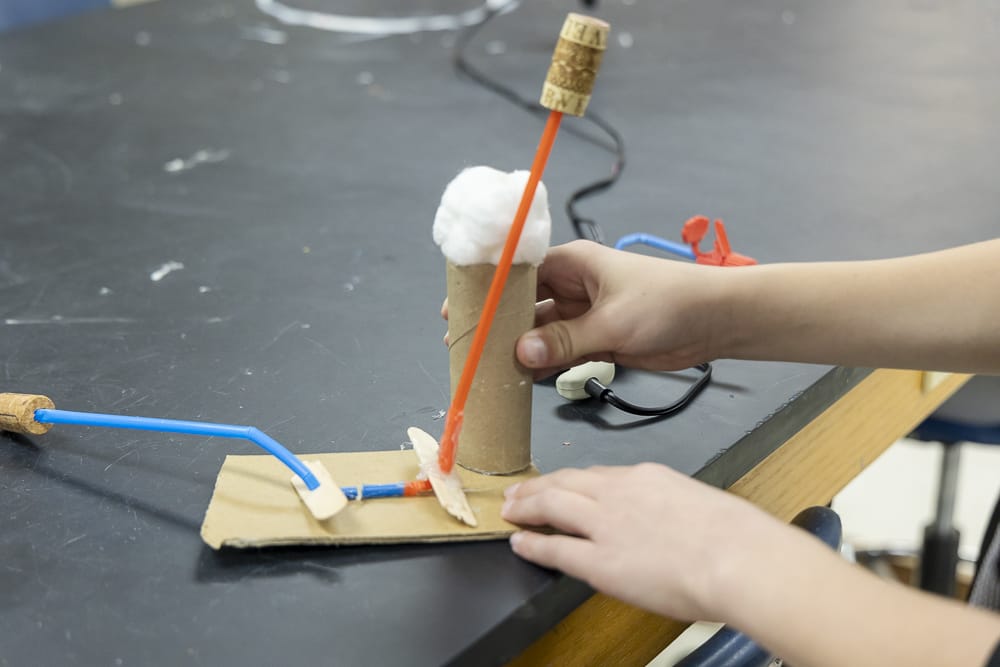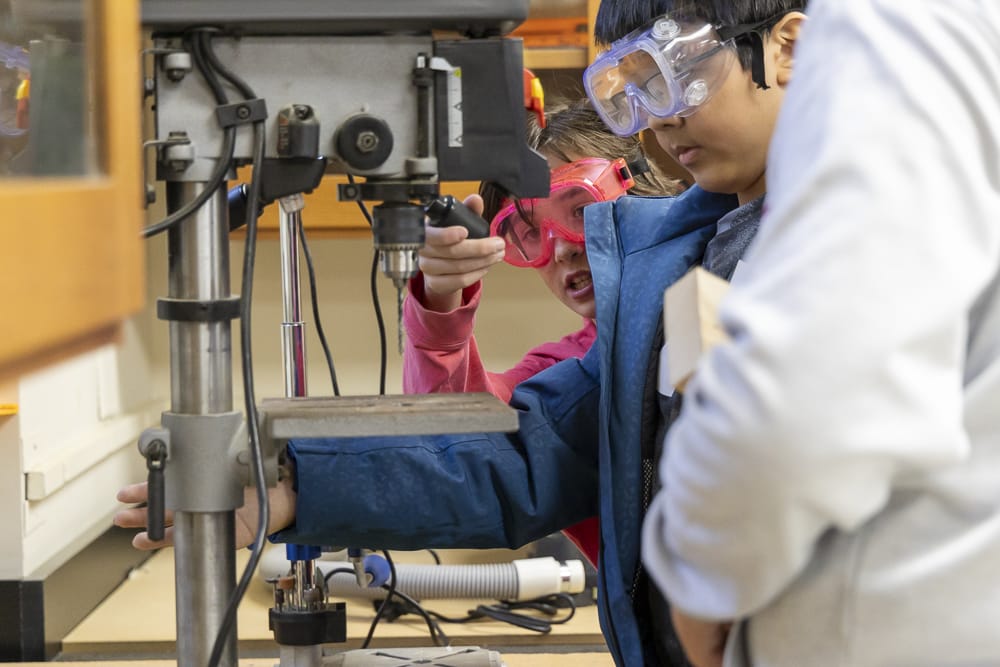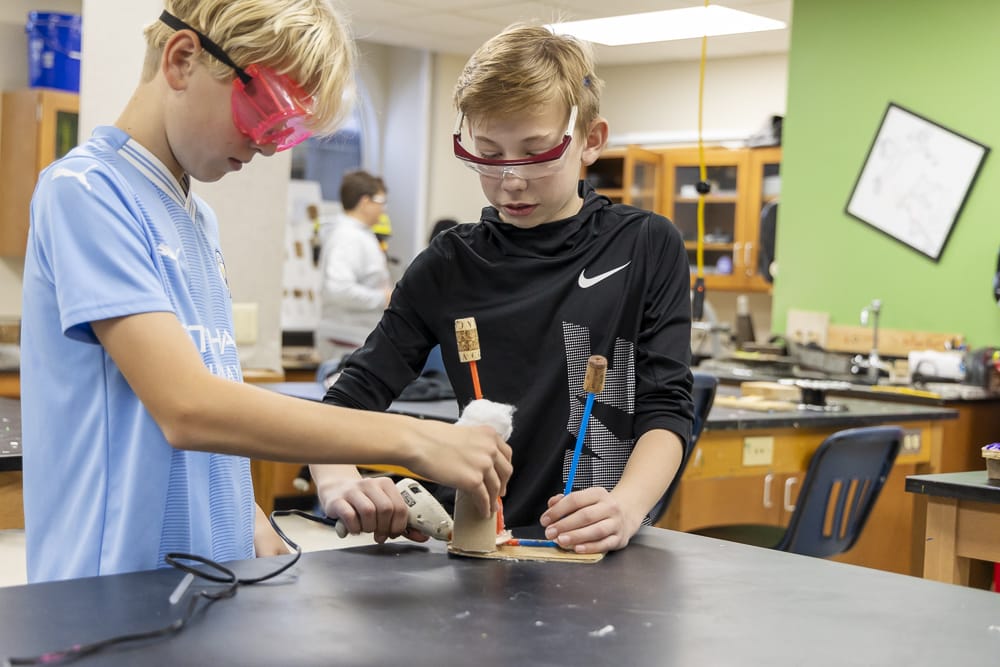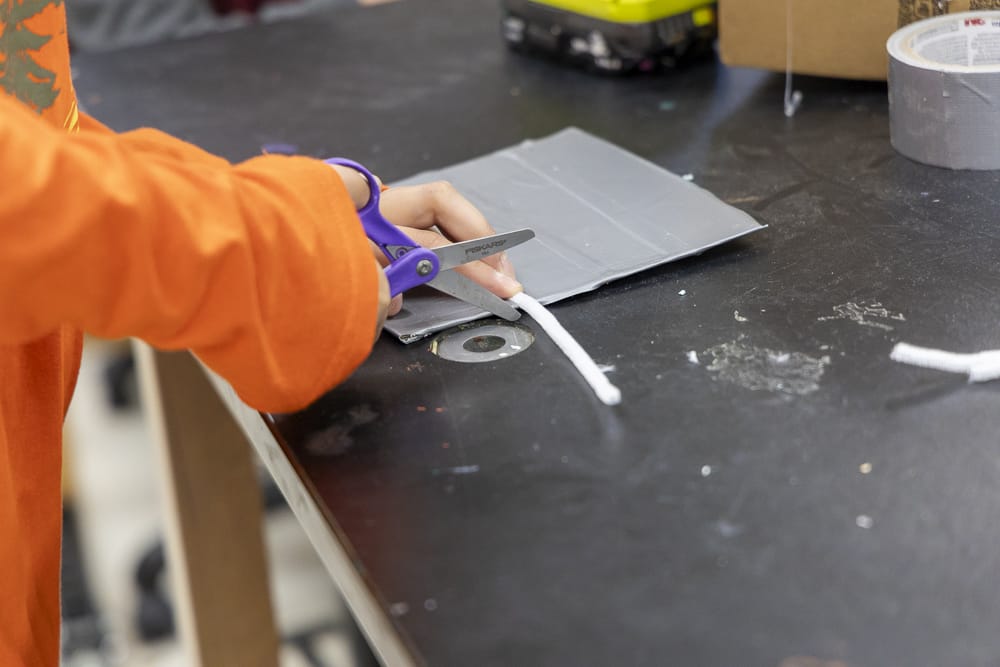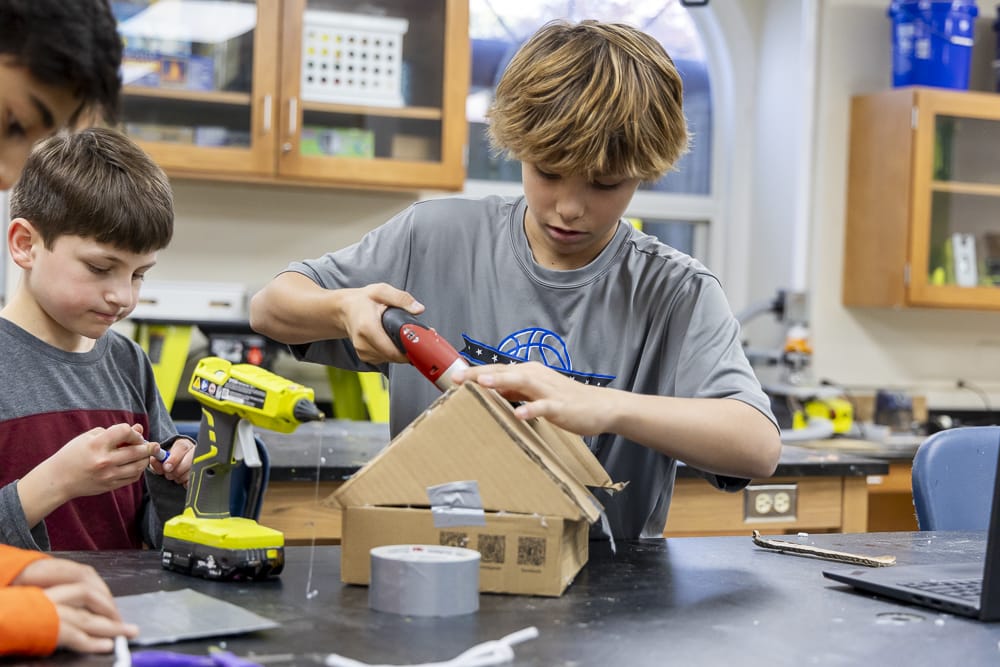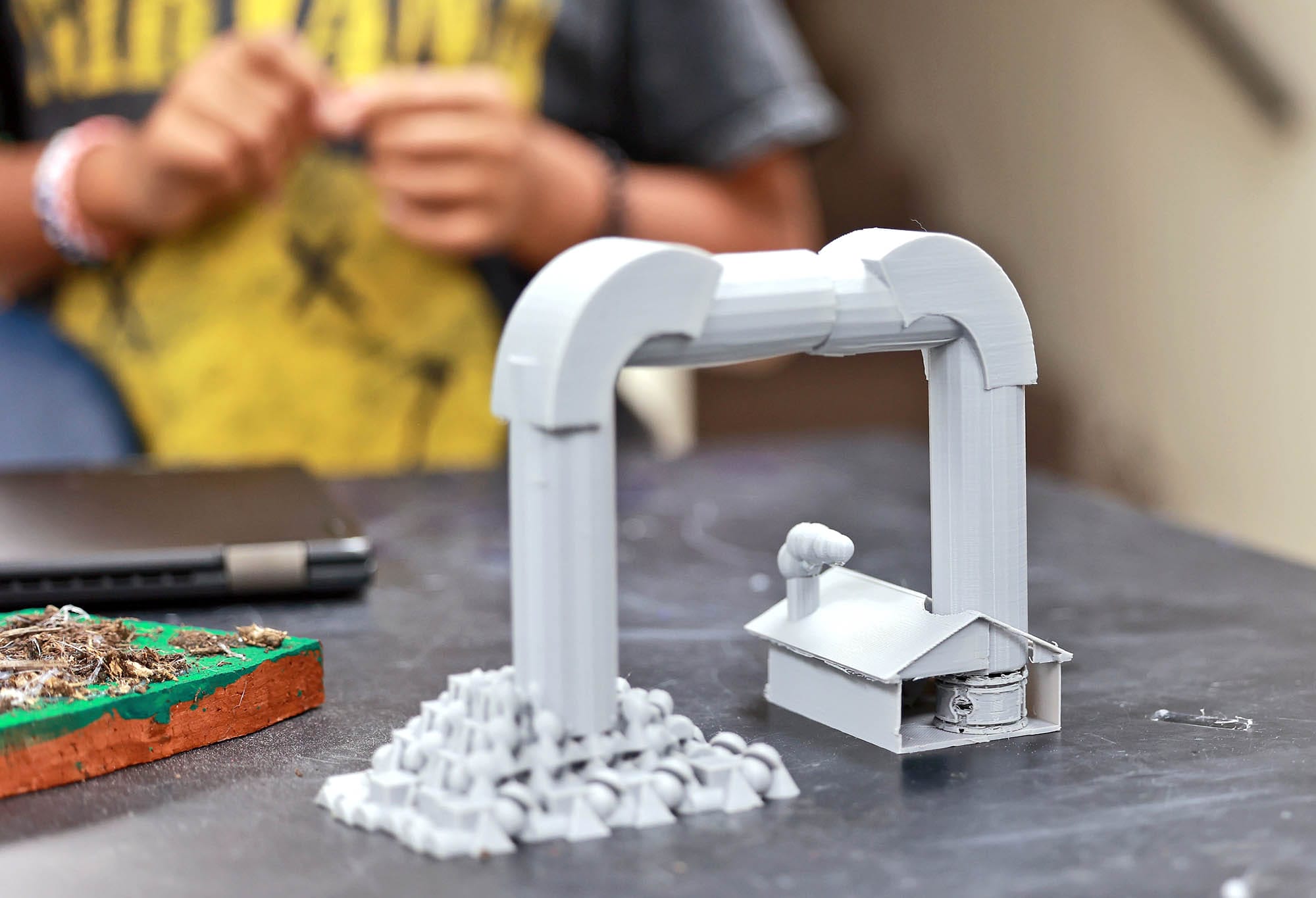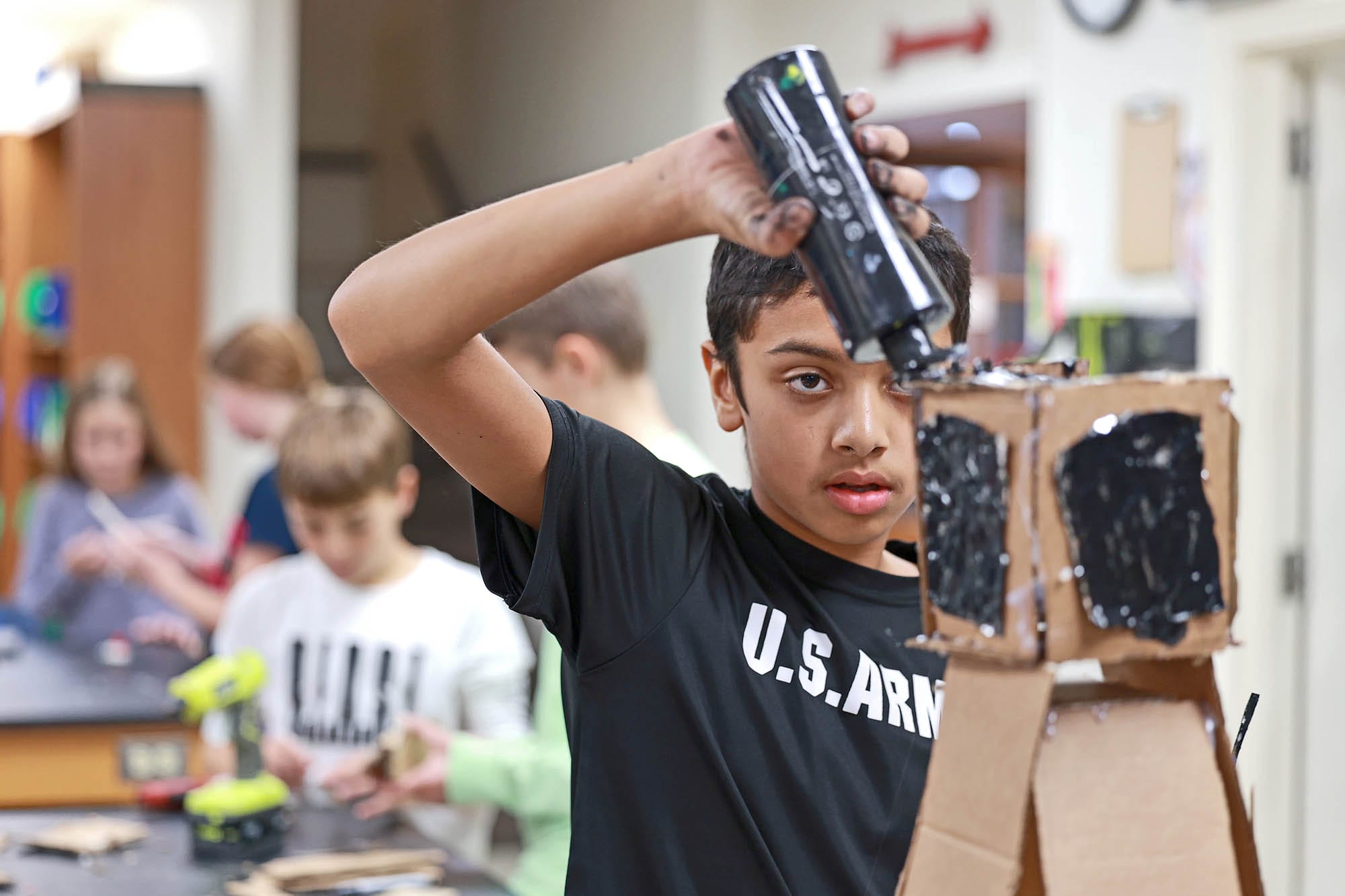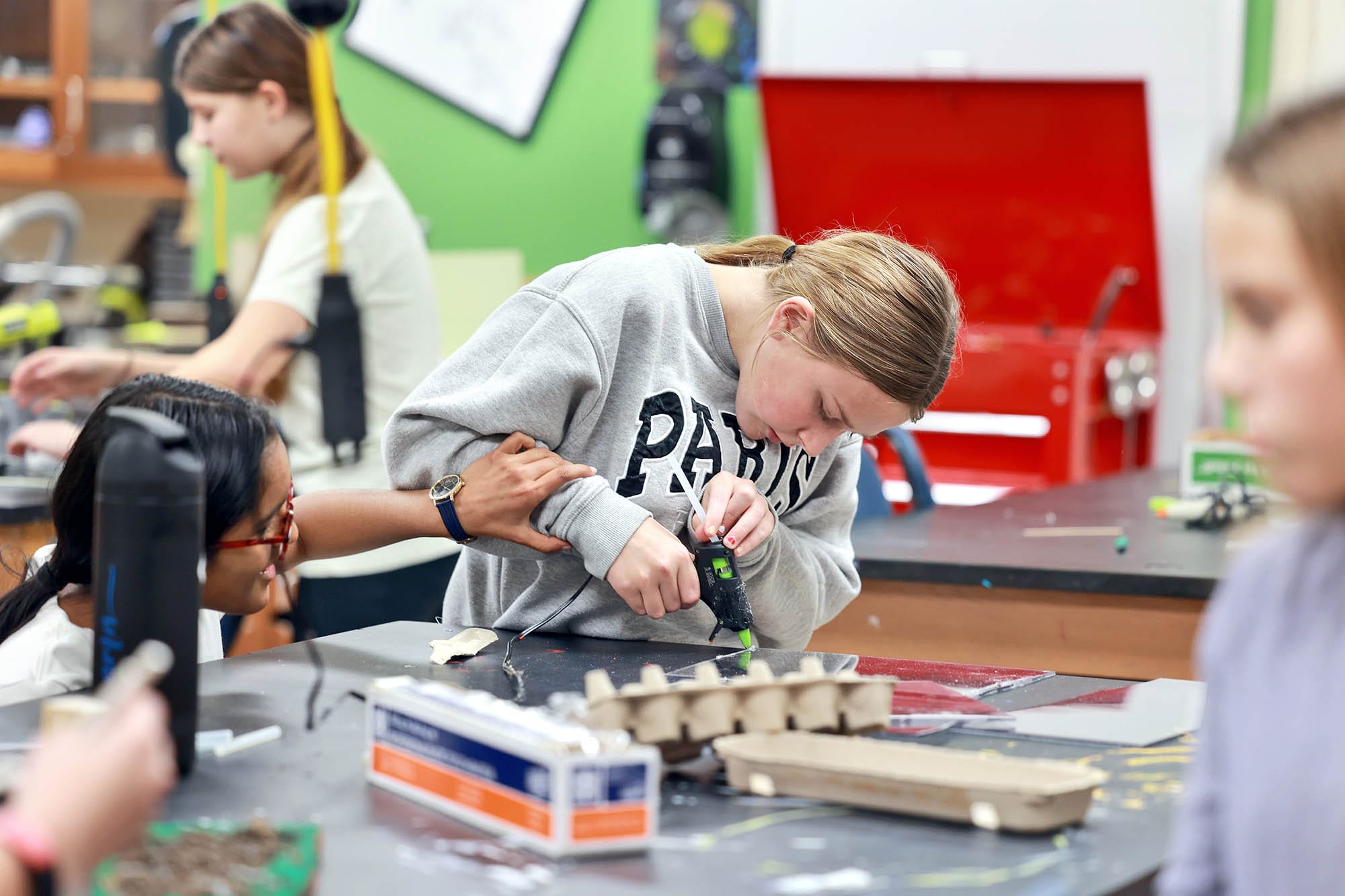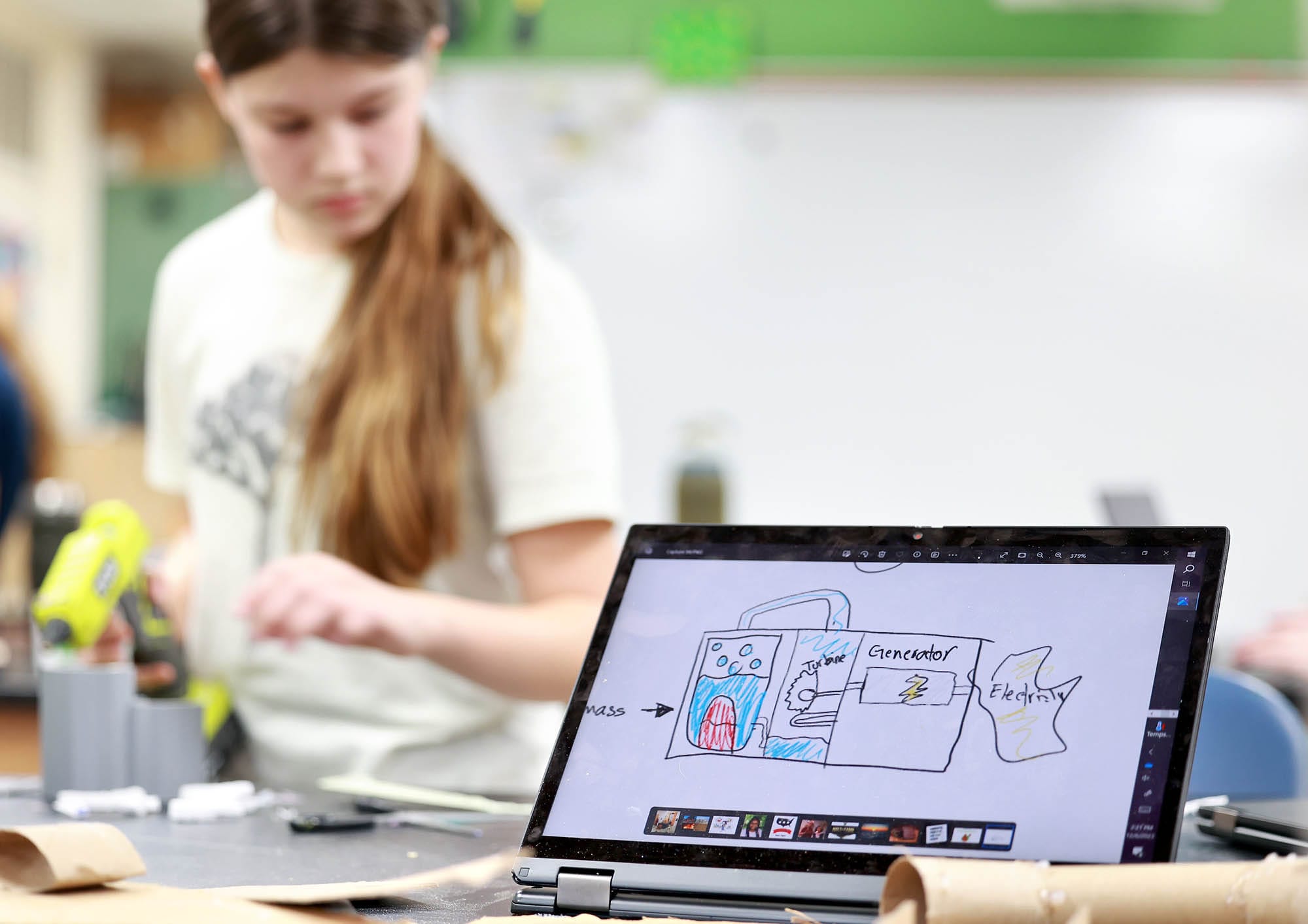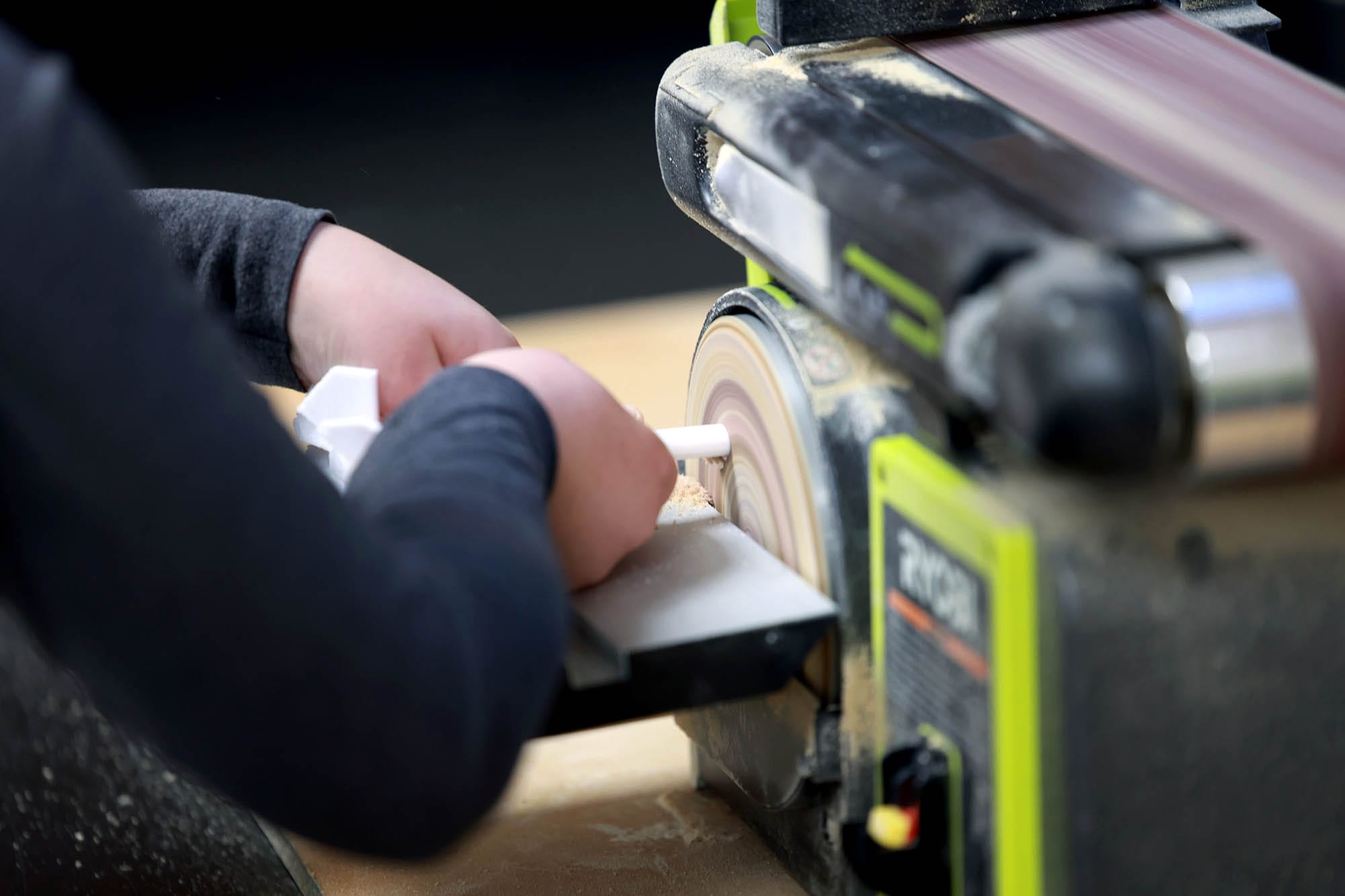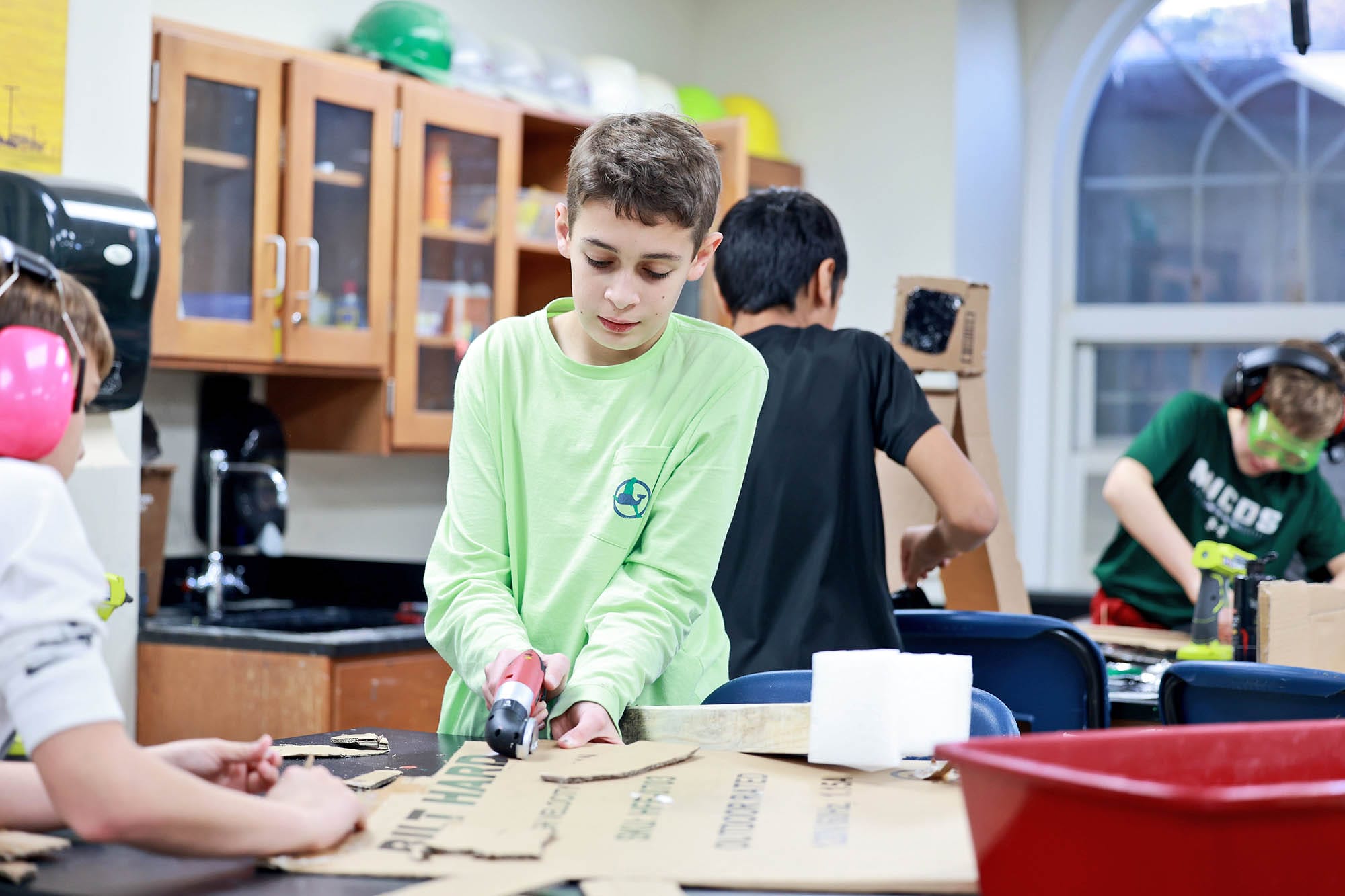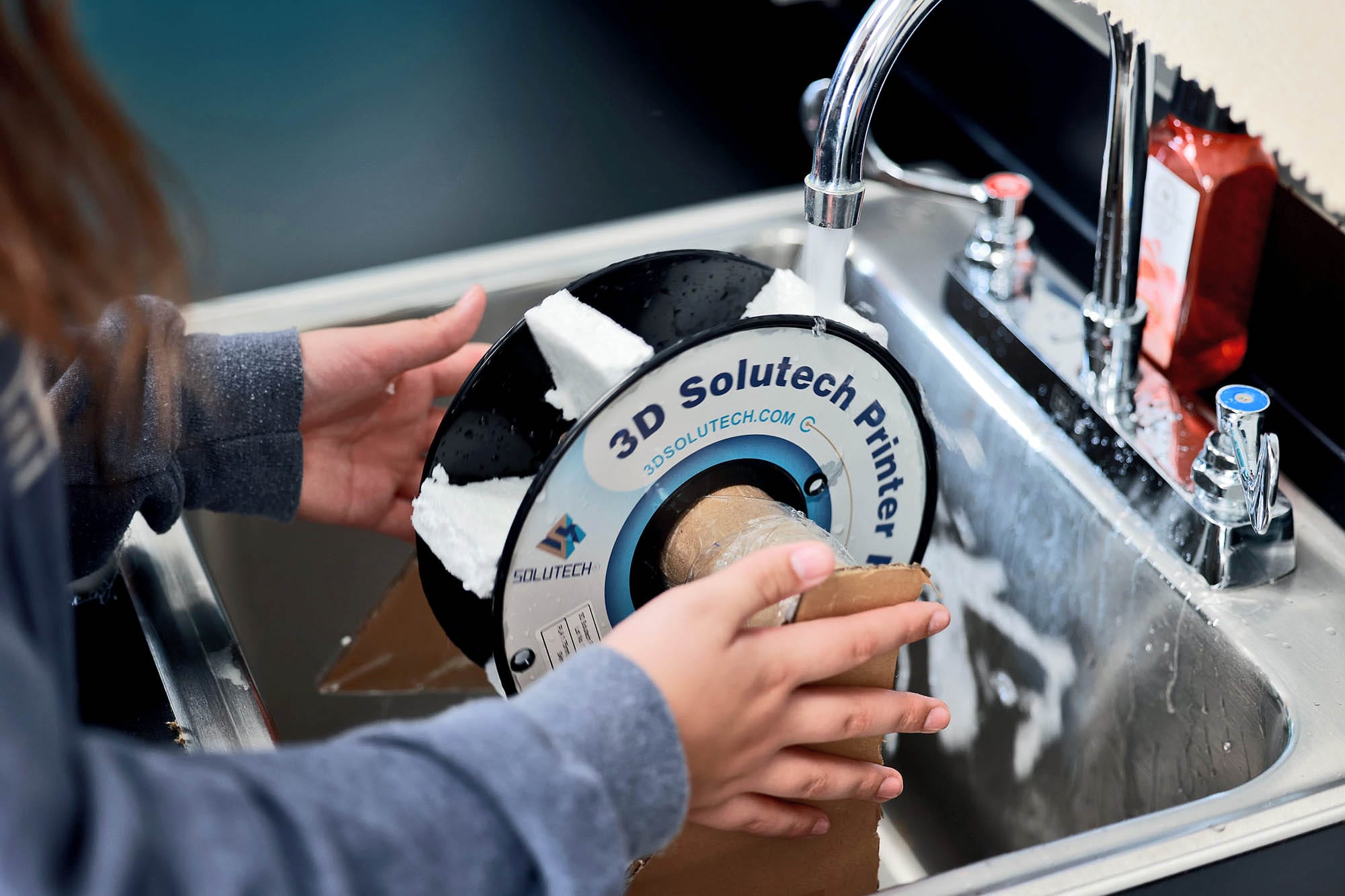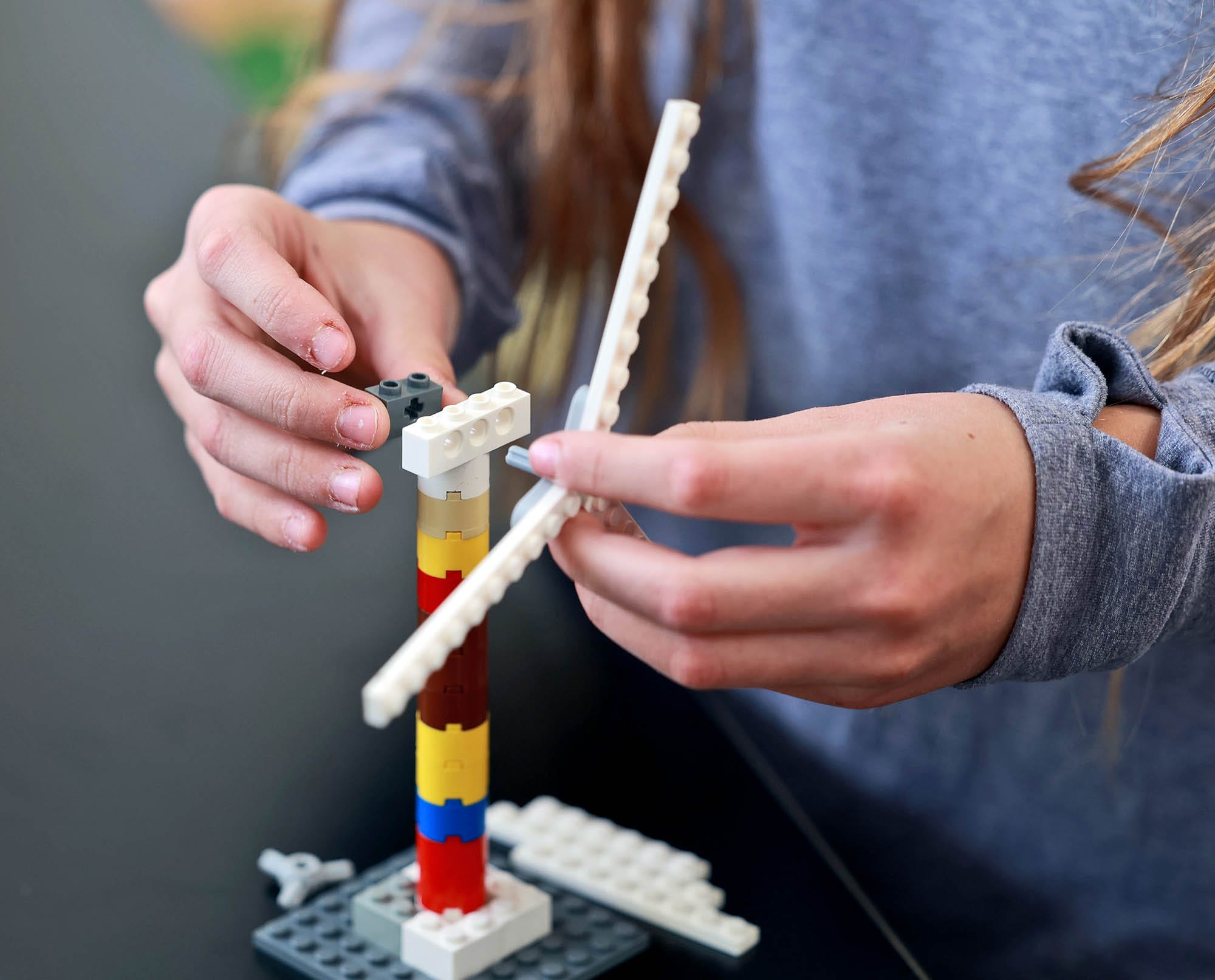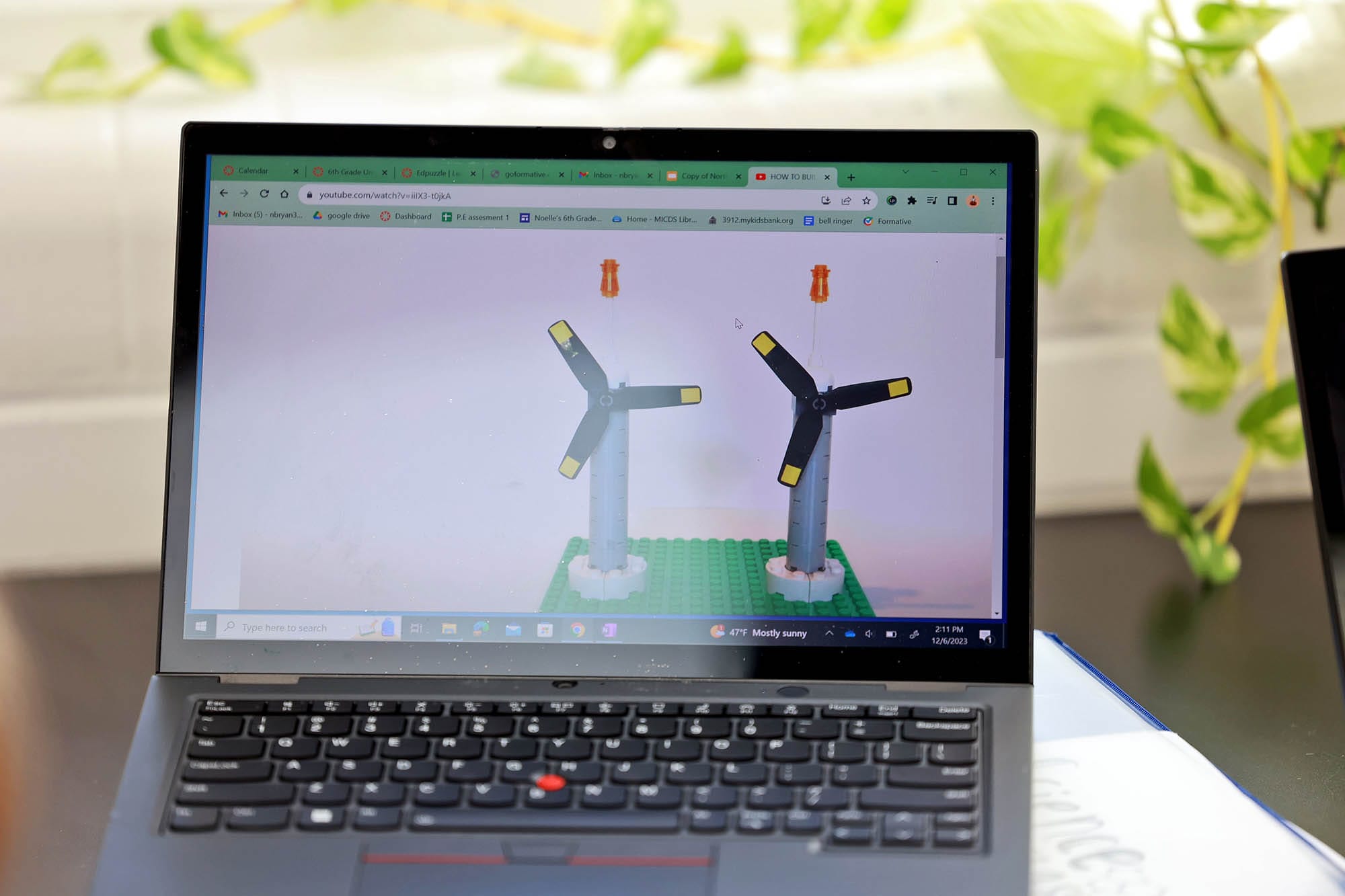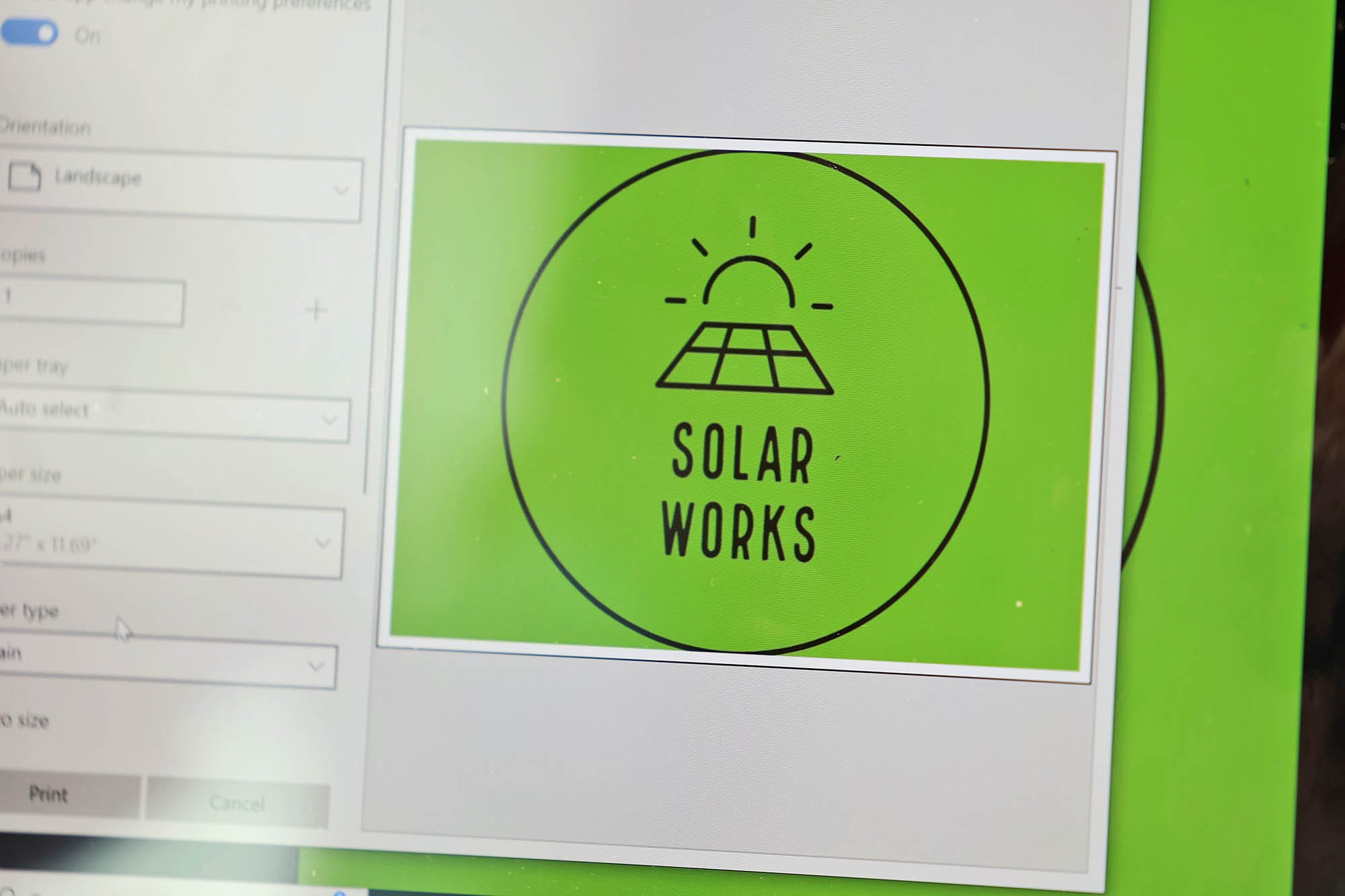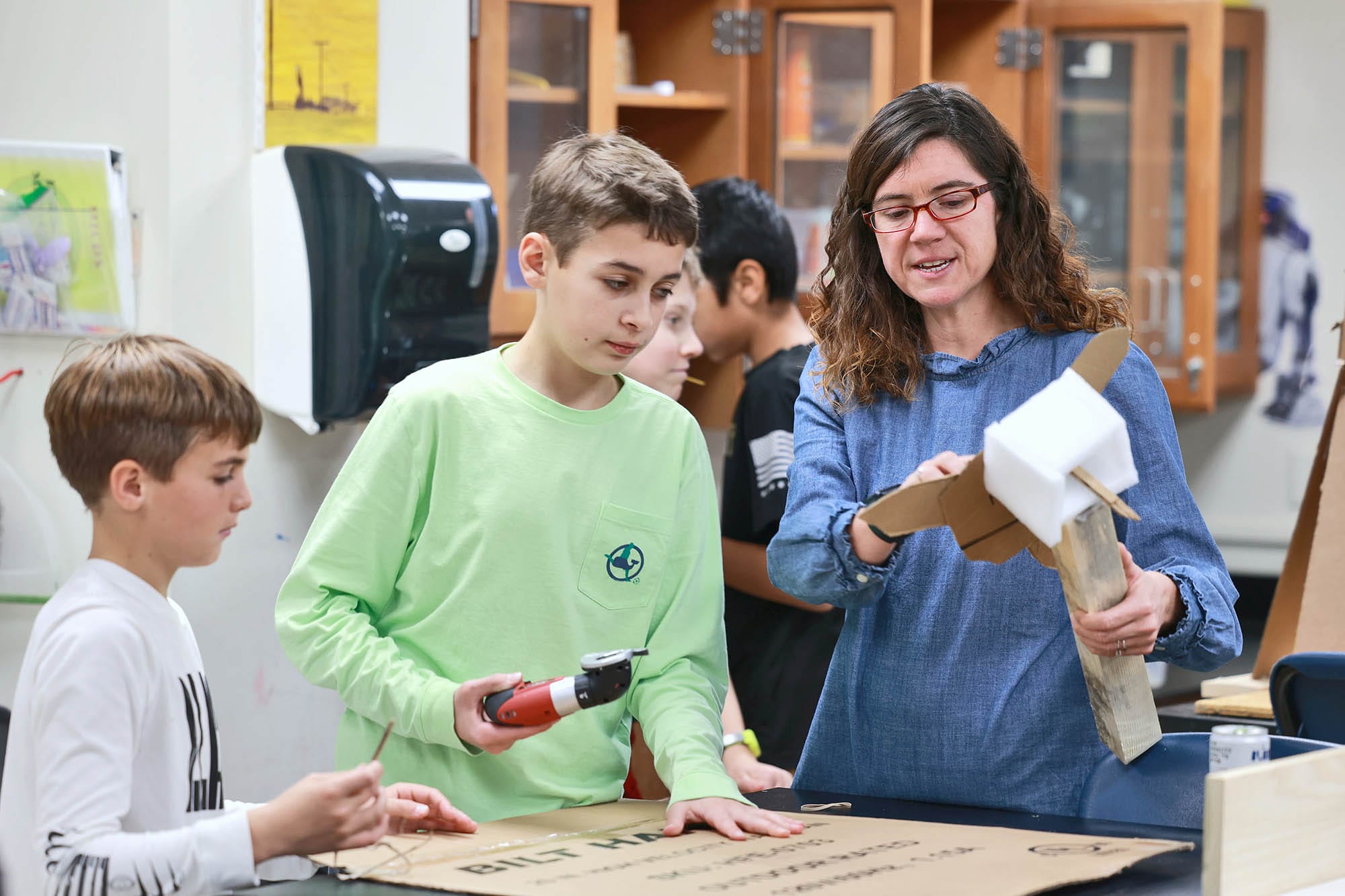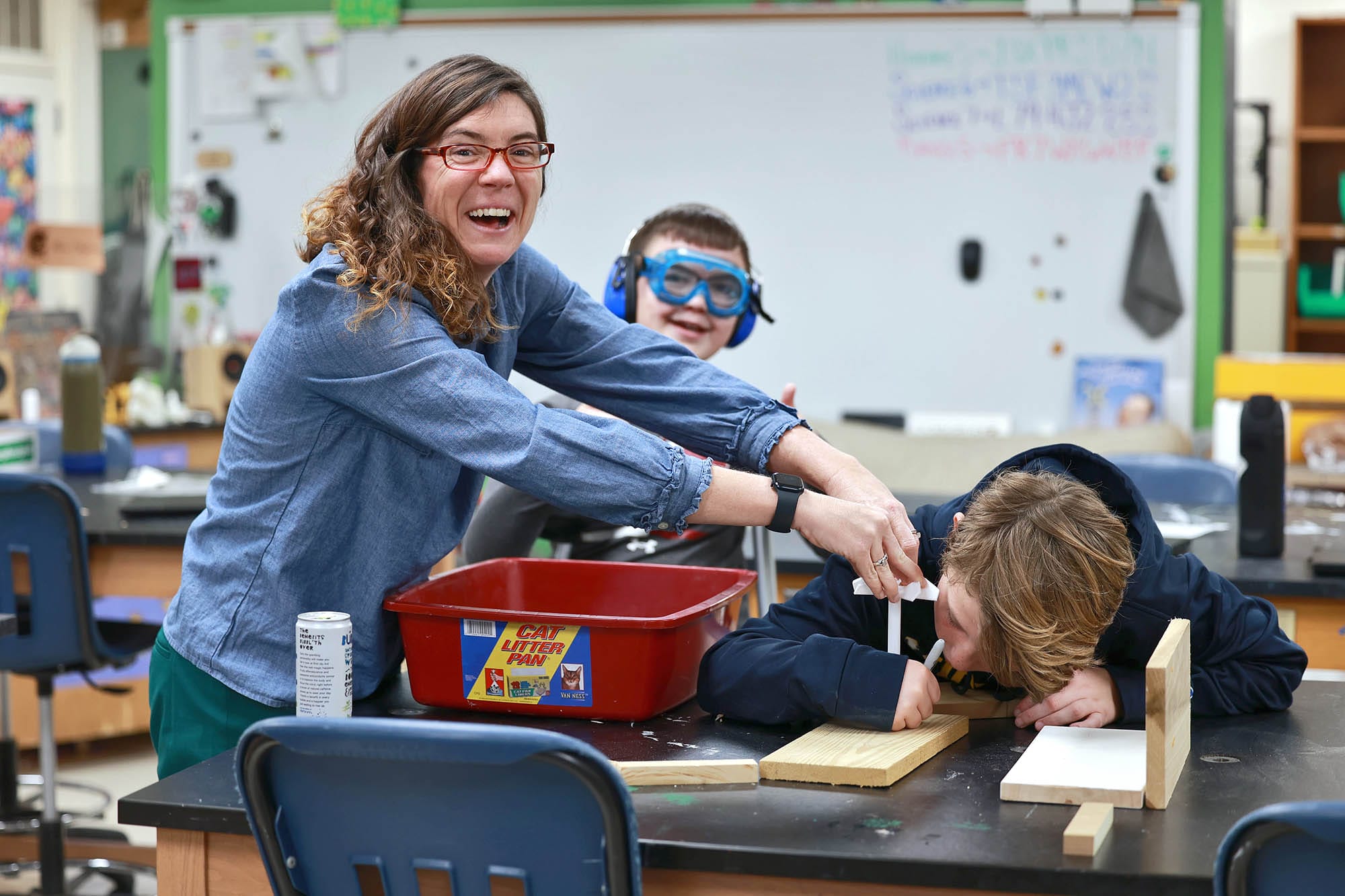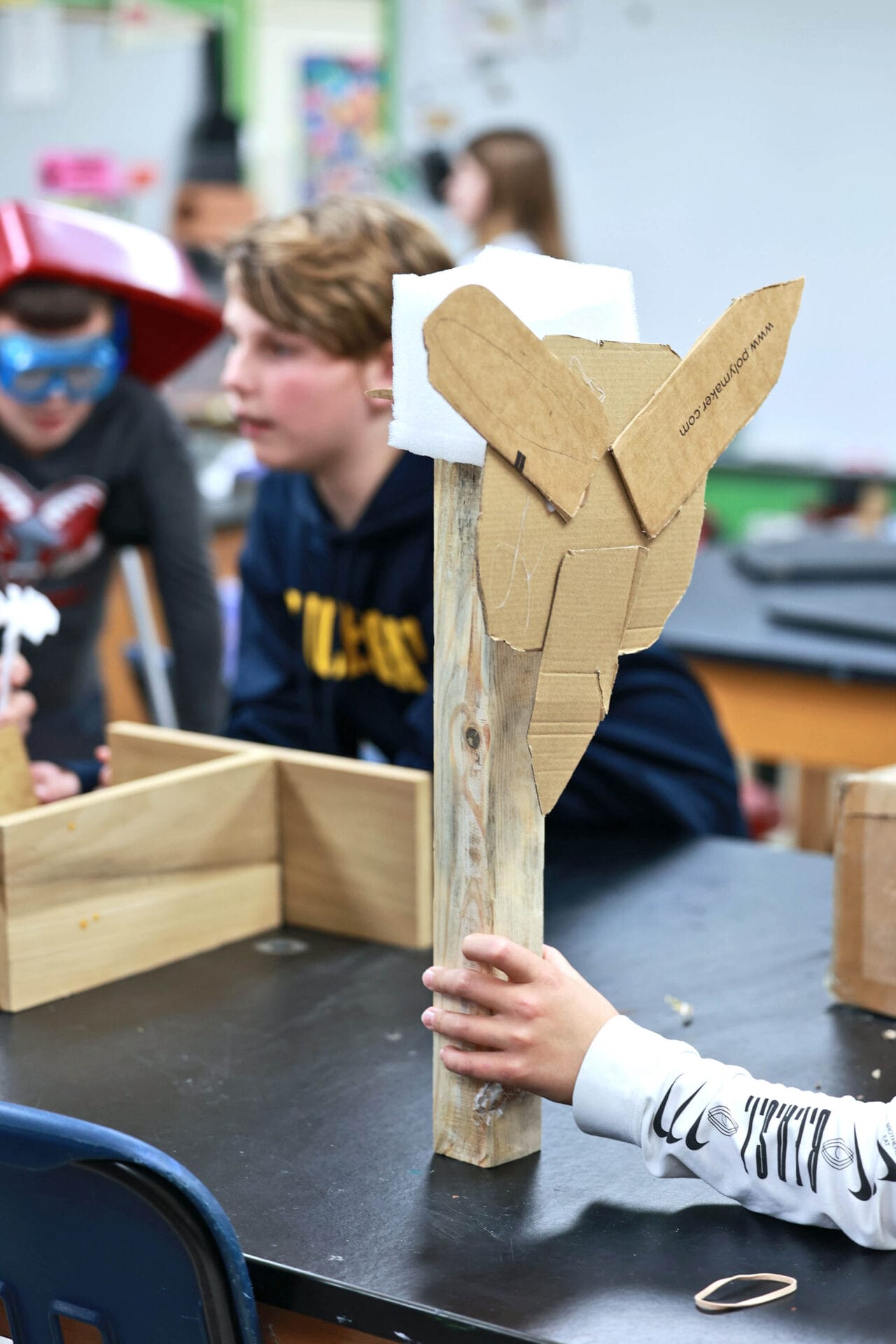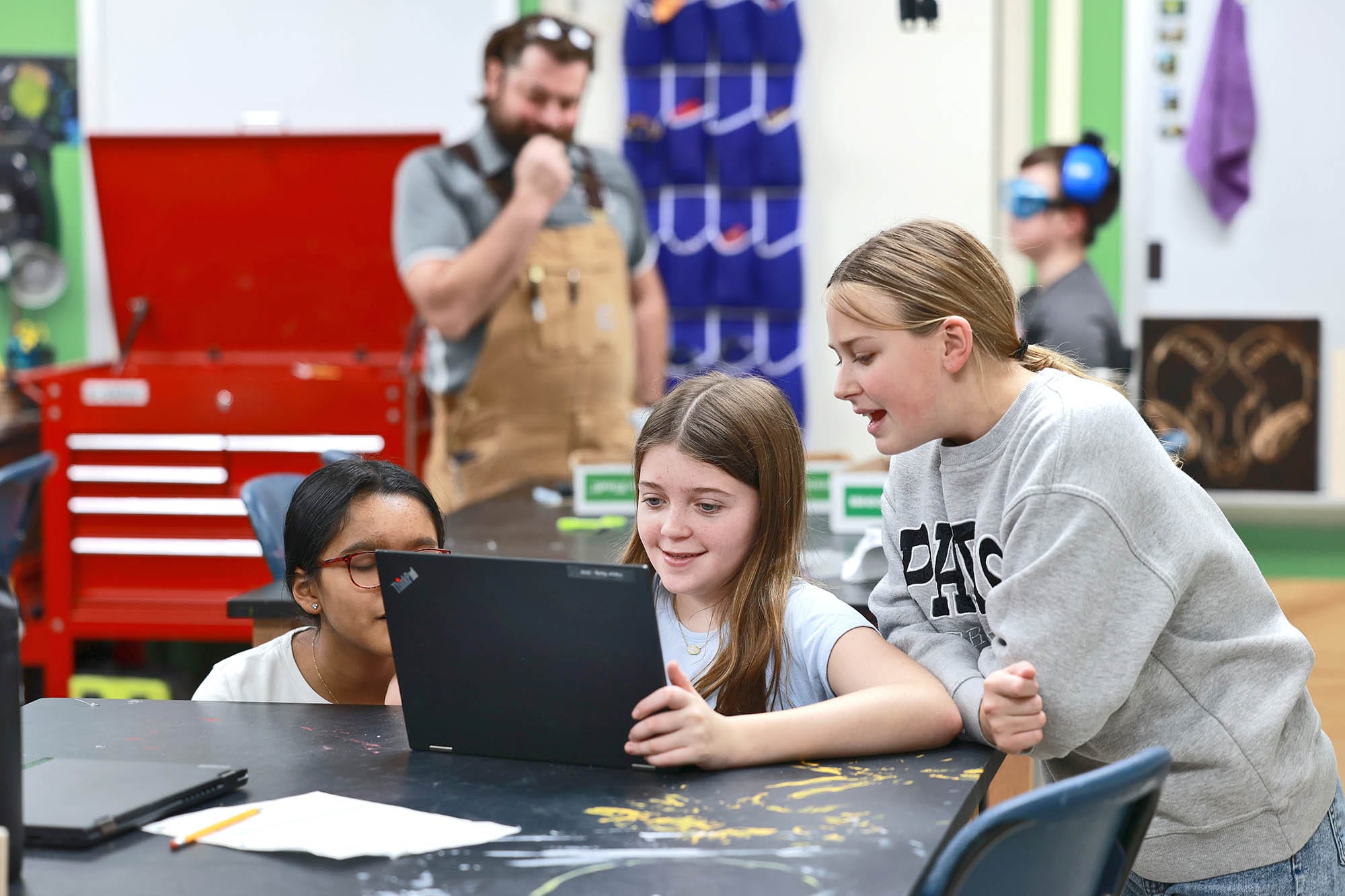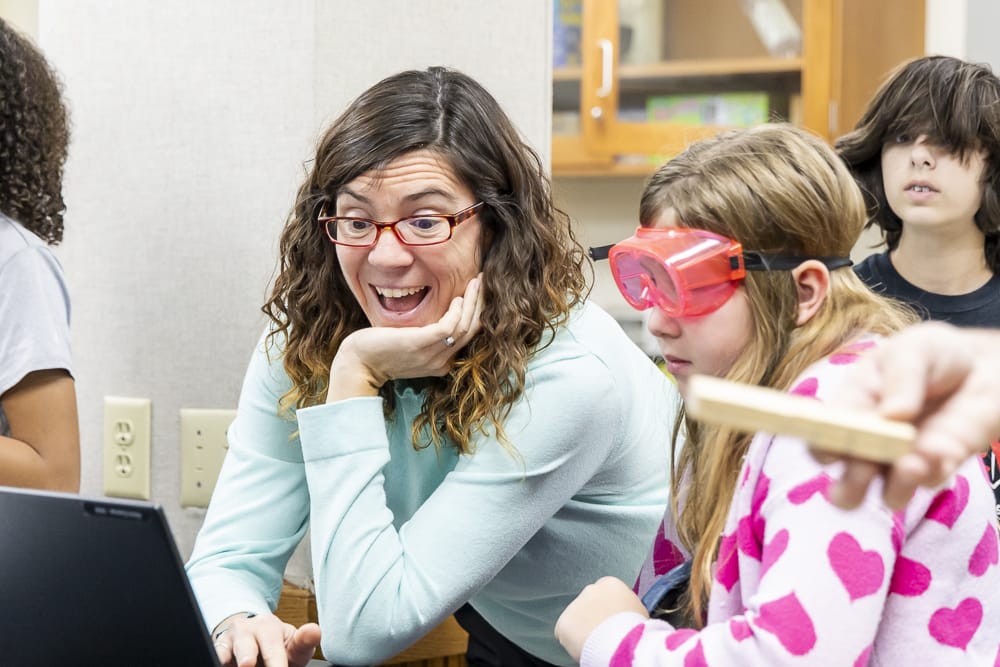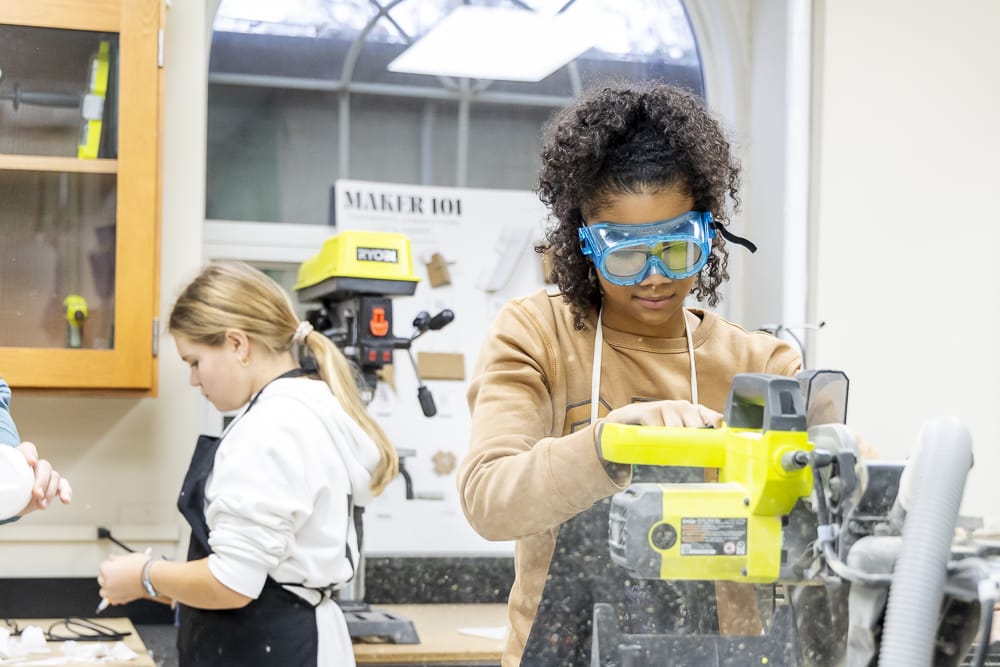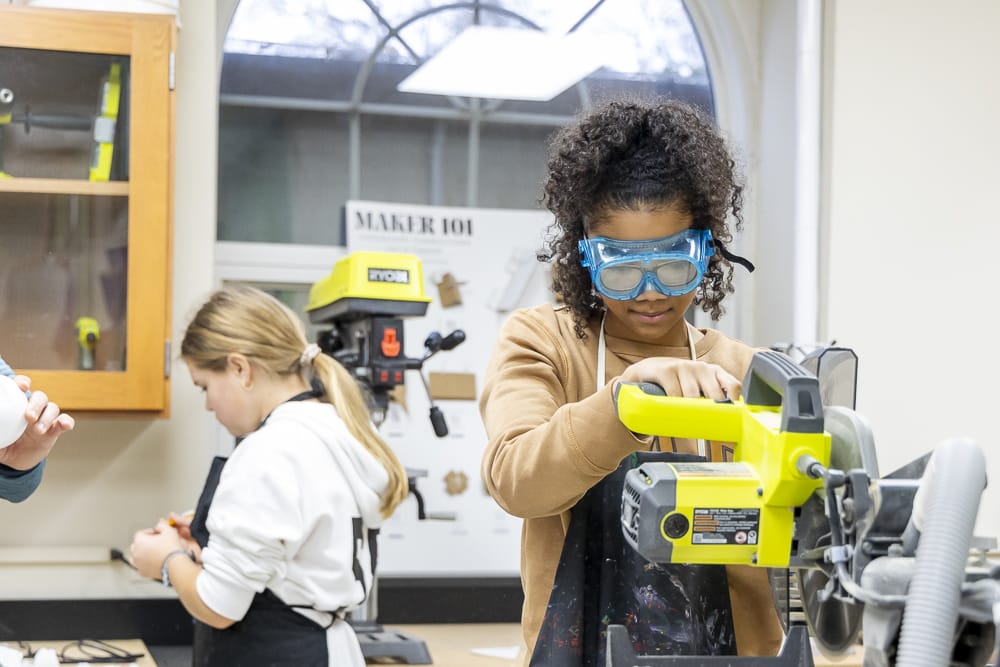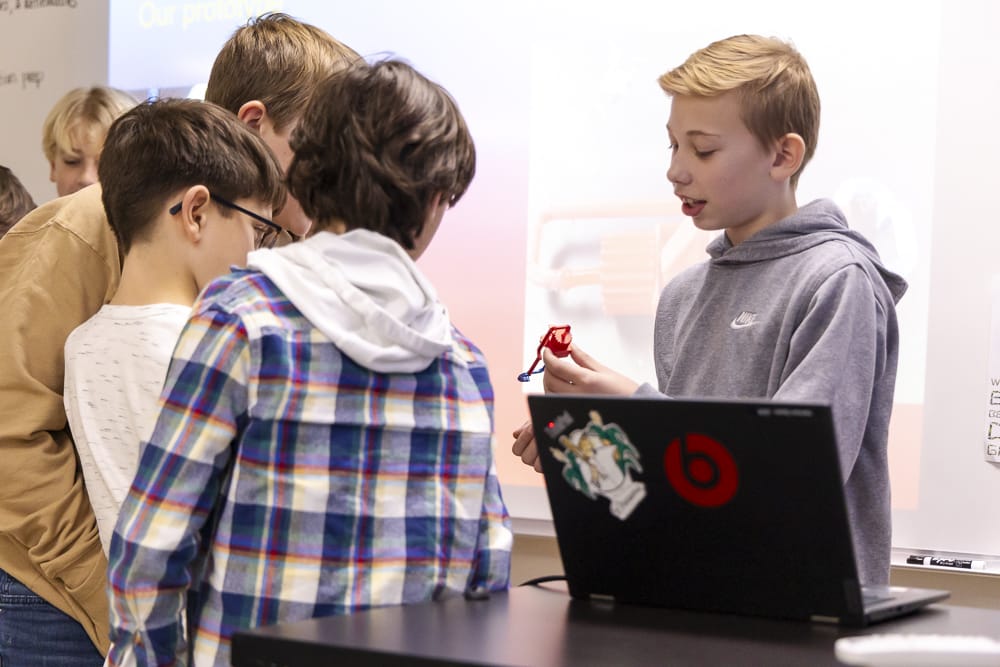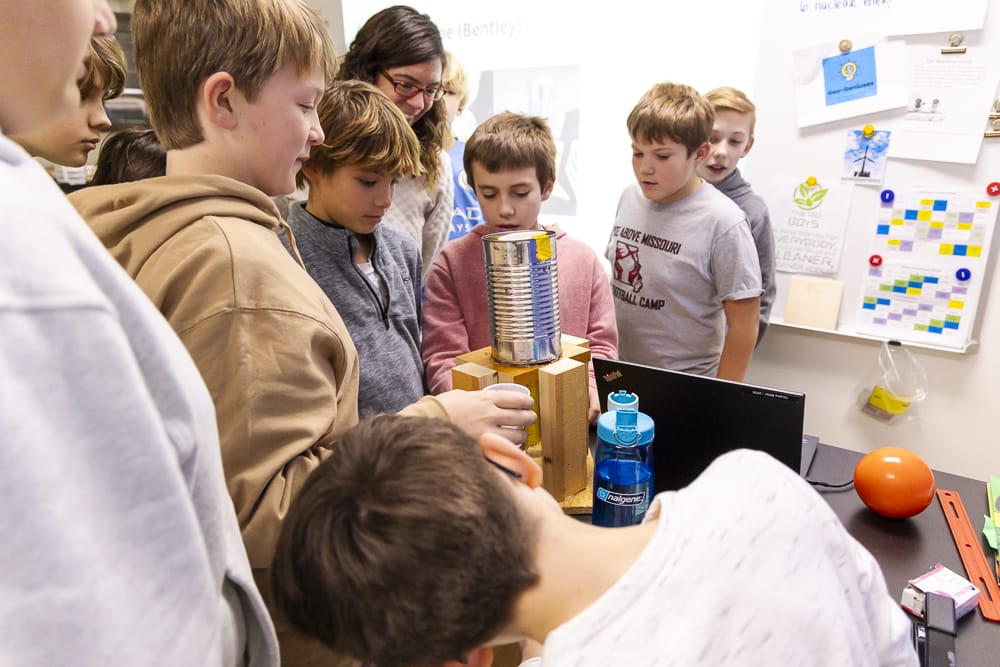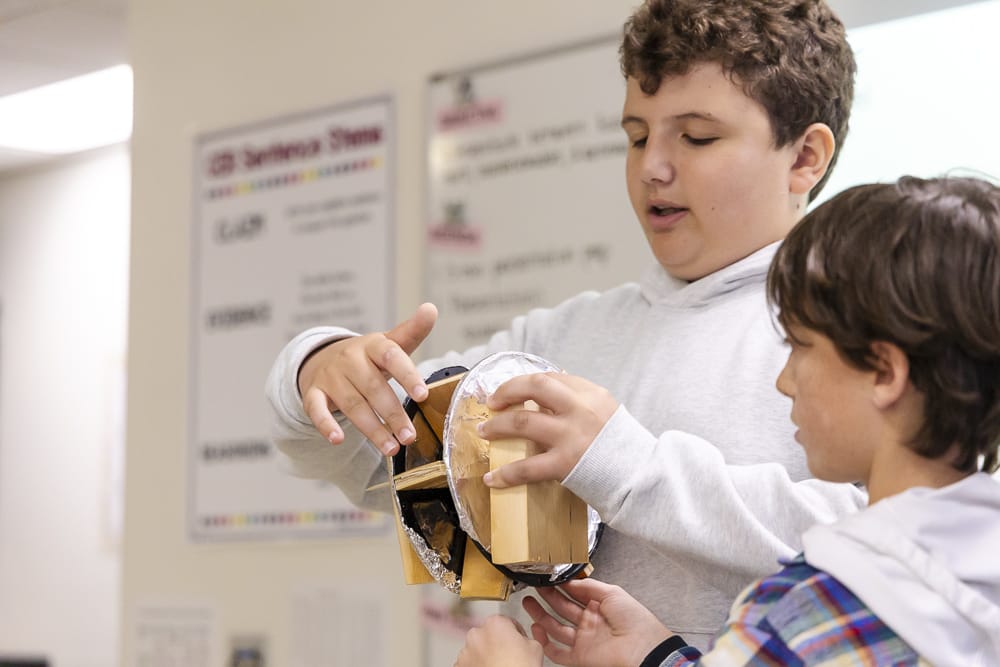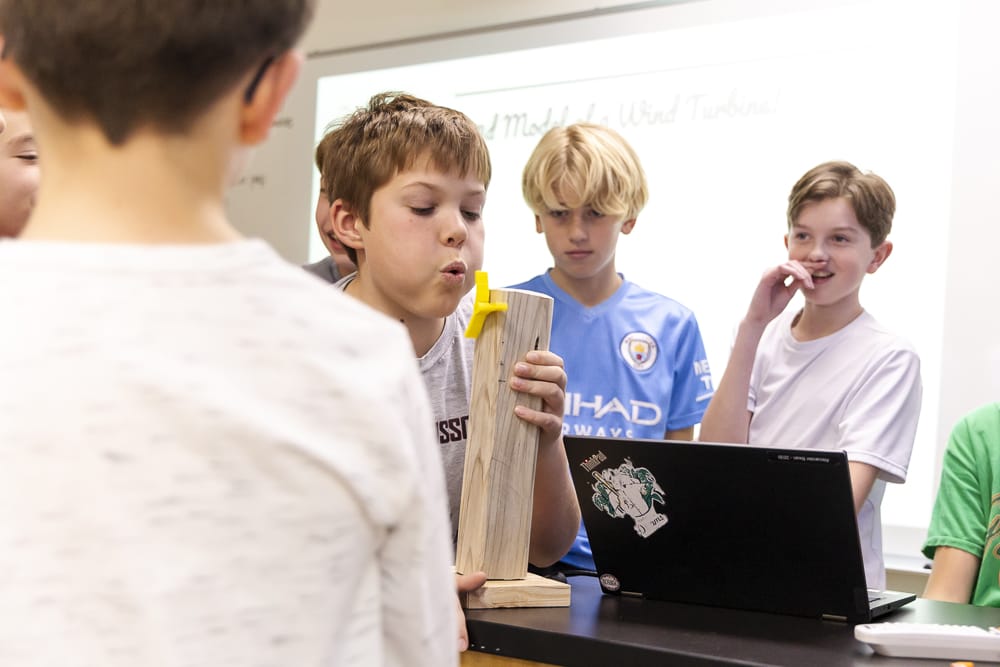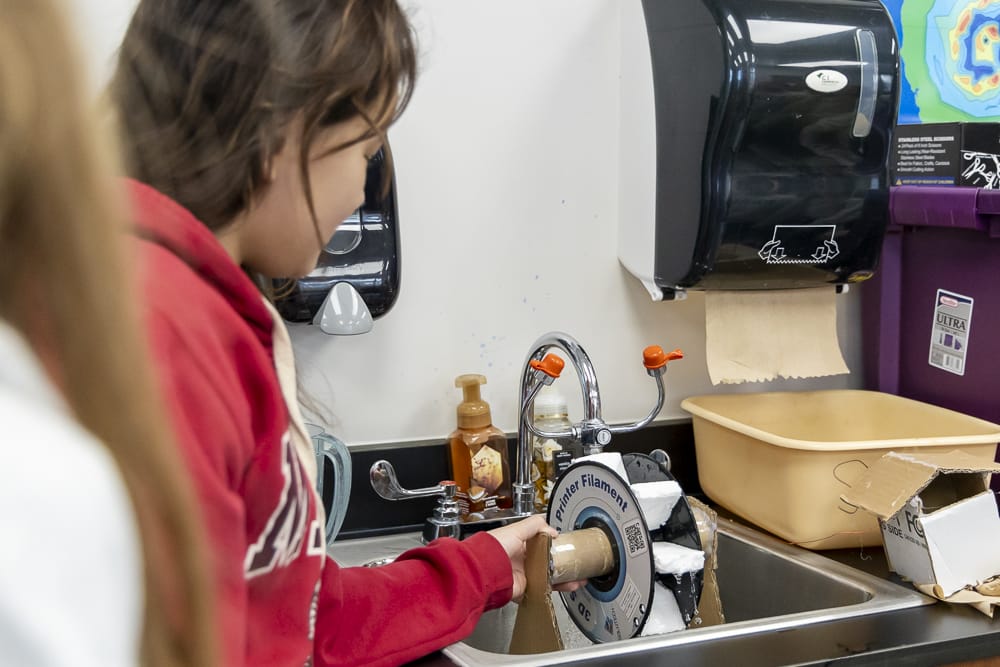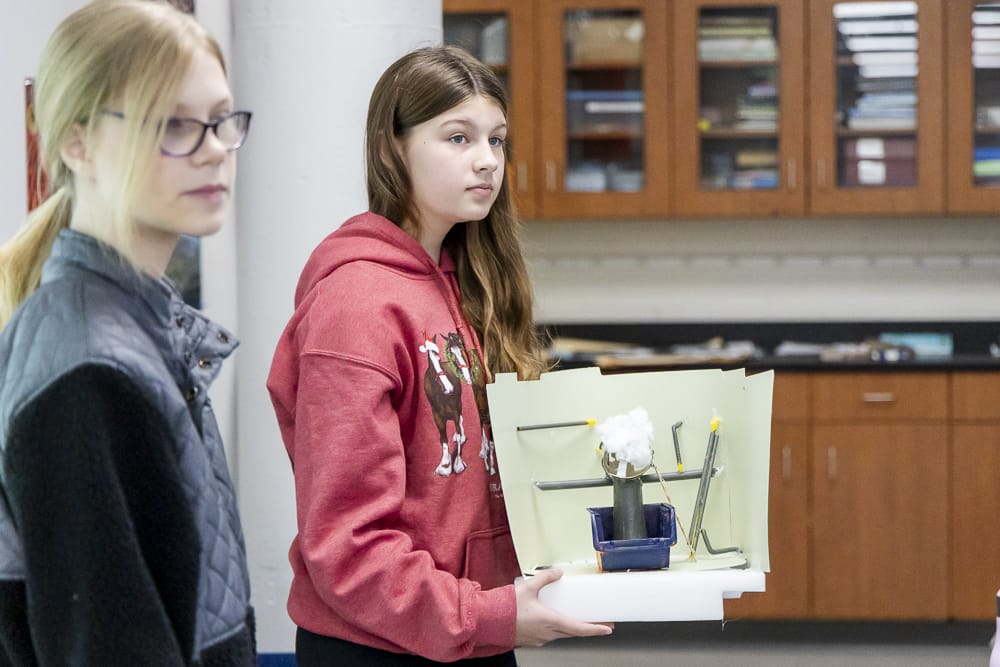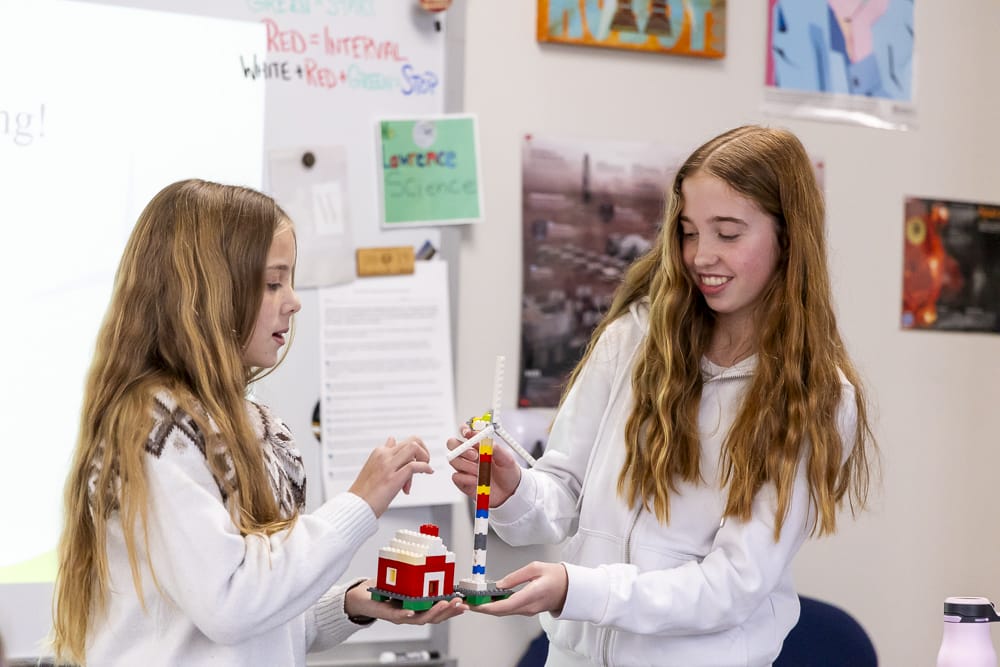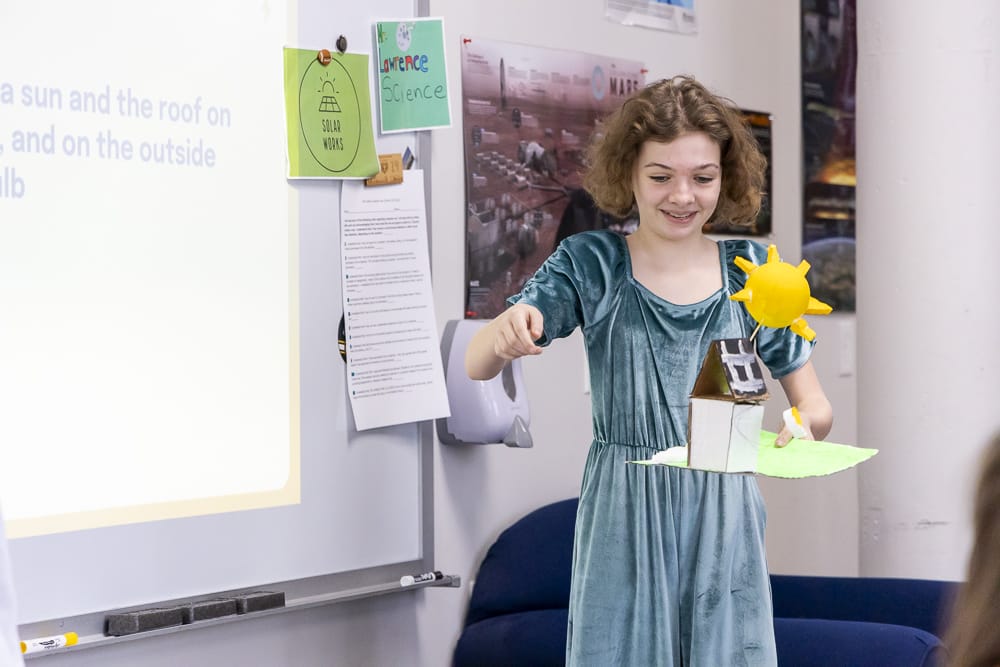Sixth-grade science students recently tried on the role of renewable energy entrepreneurs. The trend towards greener, more sustainable technology creates many opportunities for entrepreneurial-minded individuals, and our students are no exception. They took a deep dive into the different types of renewable energy and designed their own (fictitious) companies to make Earth a better place.
Using the Middle School Library as their research hub, students learned about geothermal energy, solar power, biomass fuels, hydroelectric power, wind energy, and nuclear energy. Once they selected their energy of choice, they were off to design and name a company that supports their energy resource. Their research was also required to include pictures, graphs, charts, written descriptions, and, of course, citations for their sources.
They built prototypes in the Middle School Makerspace with the end goal of reducing the effect of human impact on the environment and promoting sustainability. They used digital fabrication software and a host of maker materials and tools.
Ajaya Spann ’30 and her group focused early on solar power. «We were thinking of using a type of magnifying glass to magnify the solar panel. It’s just one idea to make the panel more powerful. We’re still working on it,» she said.
Lexi Essman ’30 let her creativity unleash beyond her work on a solar panel idea and into the presentation portion. She said, «We are making a solar panel and expanding it to make better use of it. There is also a layer of plastic to increase its sturdiness compared to older solar panel designs. Our final presentation is designed like a social media Instagram story feed where you can flip up and see all of our information about solar energy.»
When all the pieces were in place, students presented their final product pitch decks. They shared how the energy is generated, a brief history of past uses of this type of energy source, locations and maps of similar companies in the United States today, advantages of their chosen energy source, disadvantages, where their company is located, and why, any financial benefits for the end users, and a diagram or rendering of their design and how it works. The audience was required to take relevant notes to be able to discuss with classmates and be an advocate for or against some of the renewable energy source ideas.
Great work, Class of 2030, on educating yourselves on renewable energy and endeavoring to create positive change for our planet and its resources!
